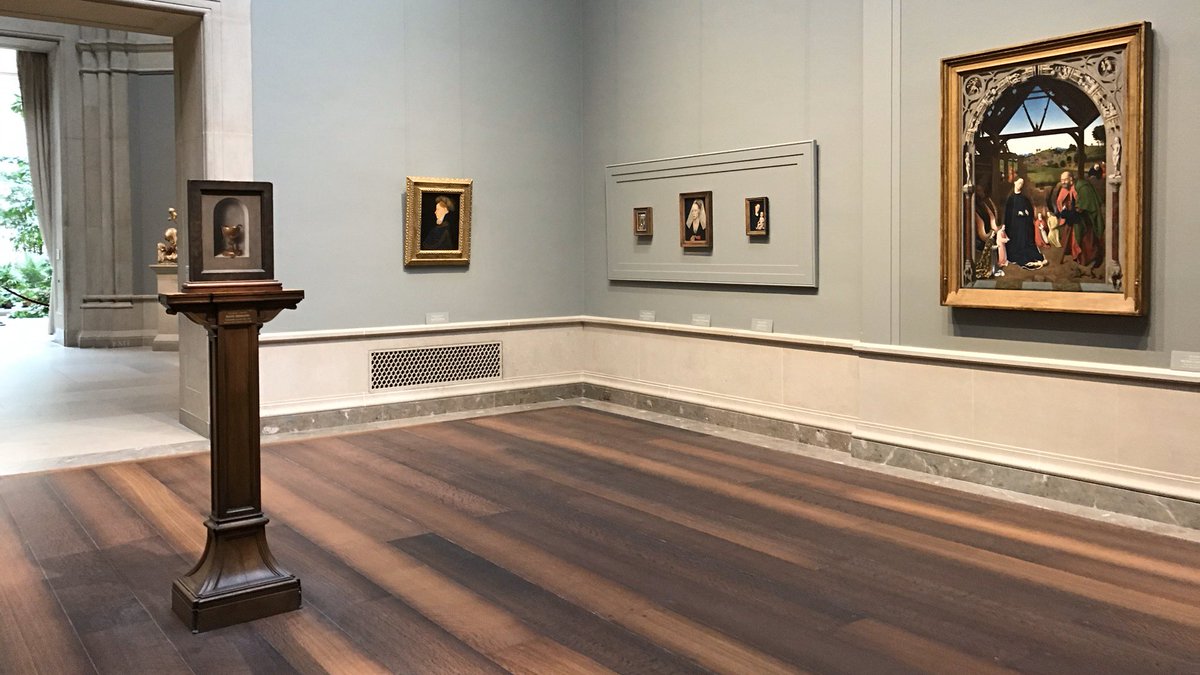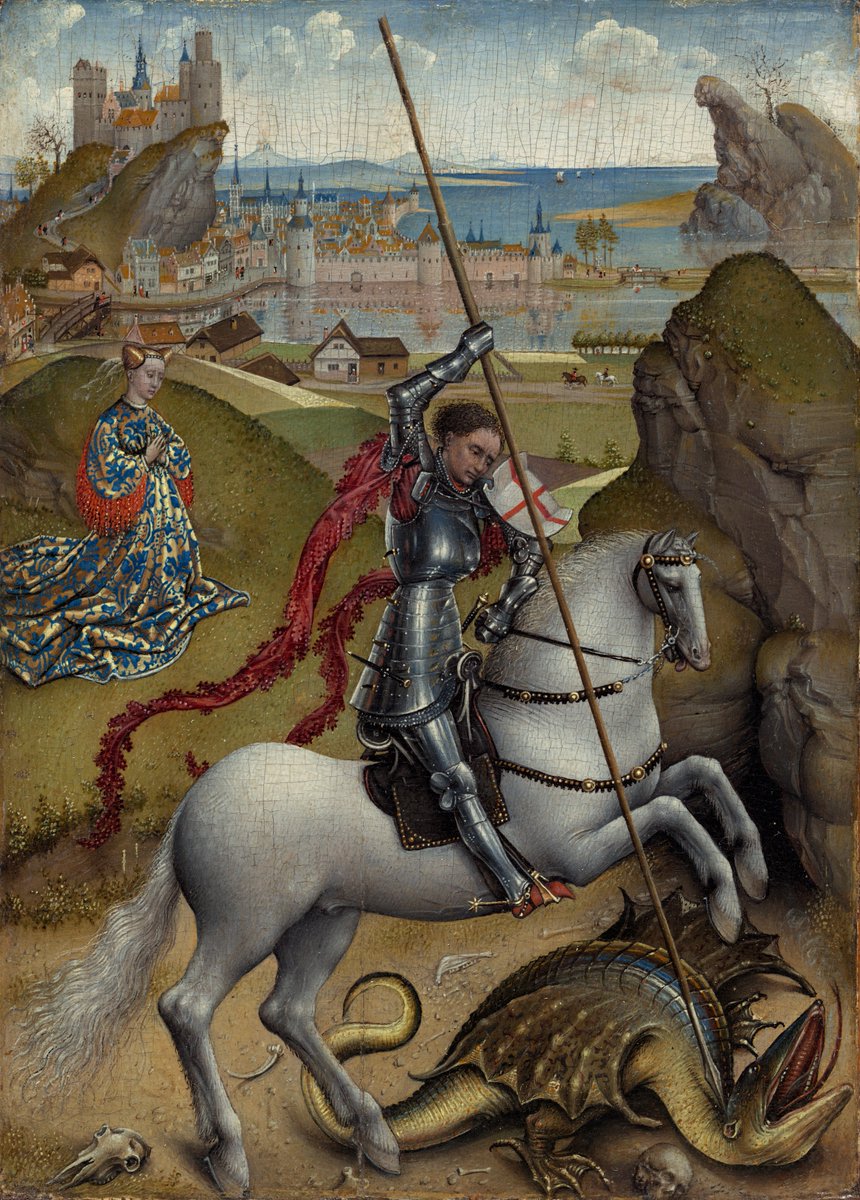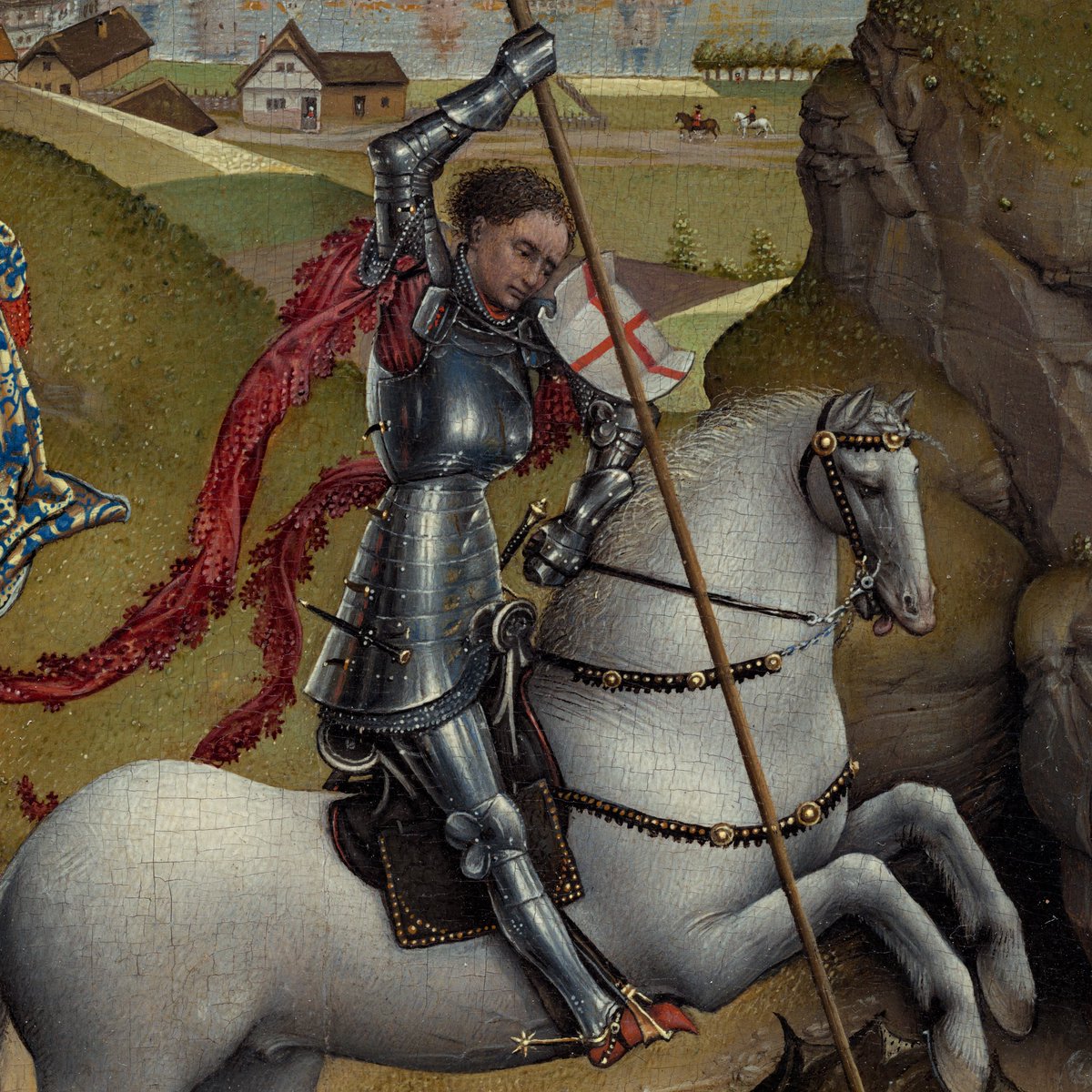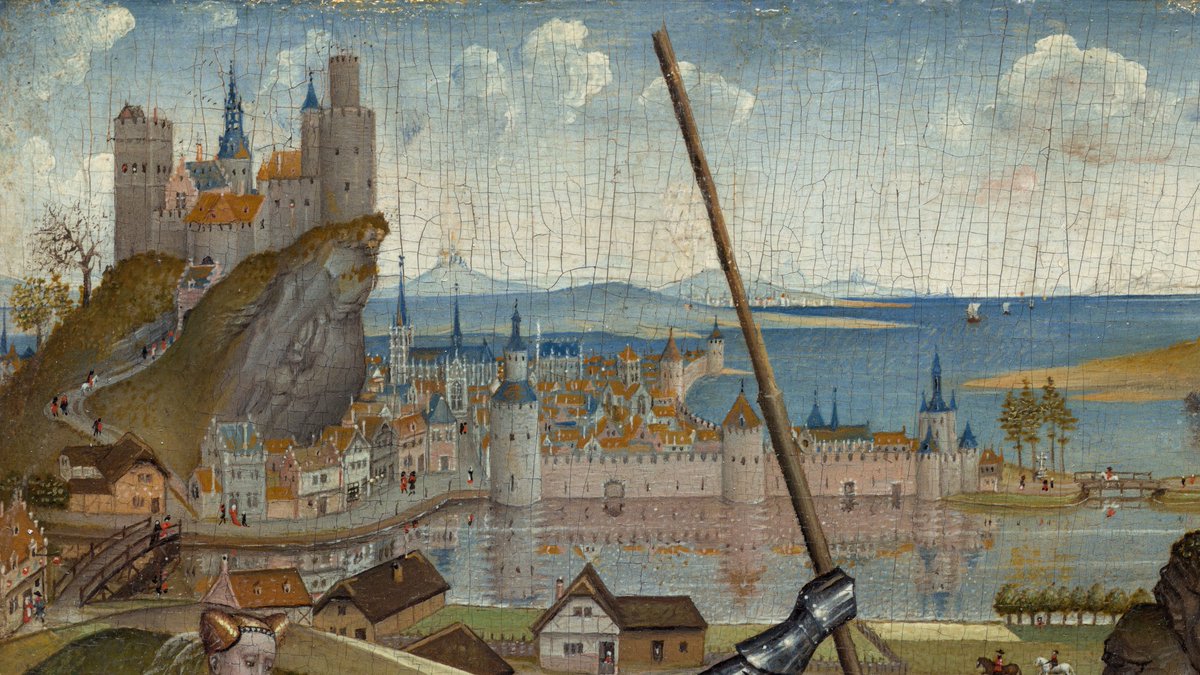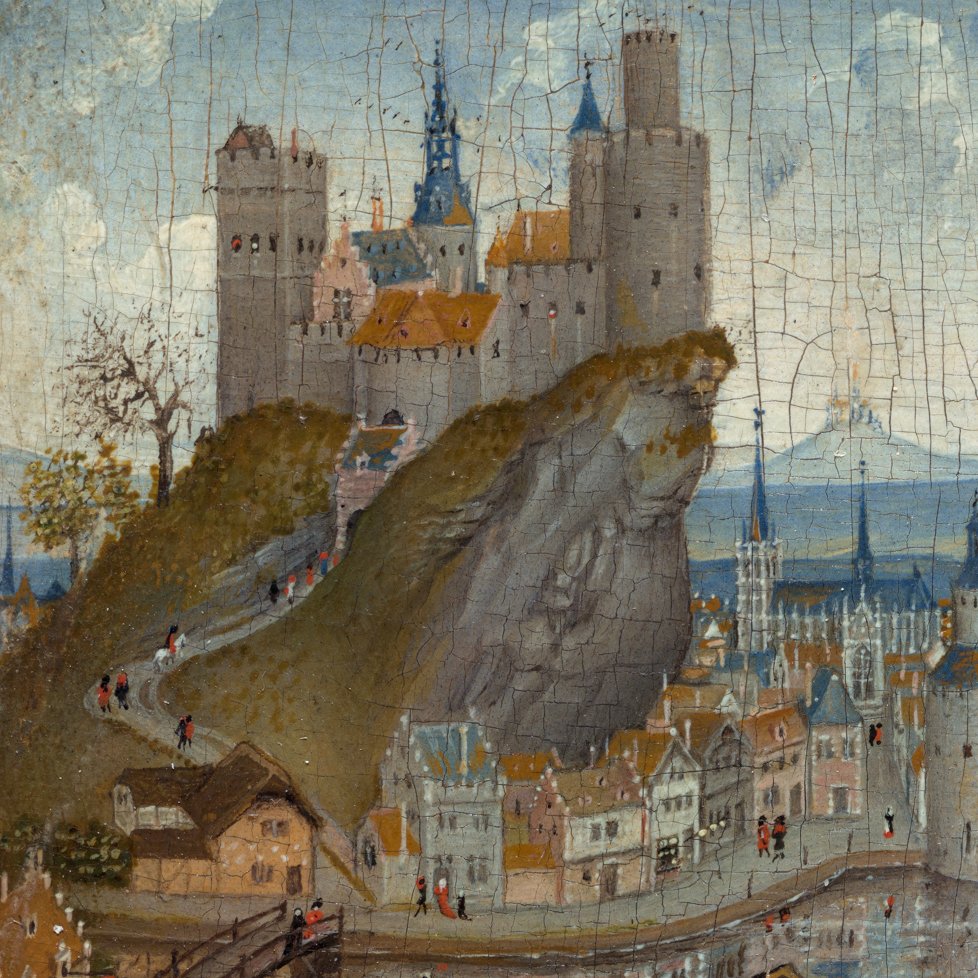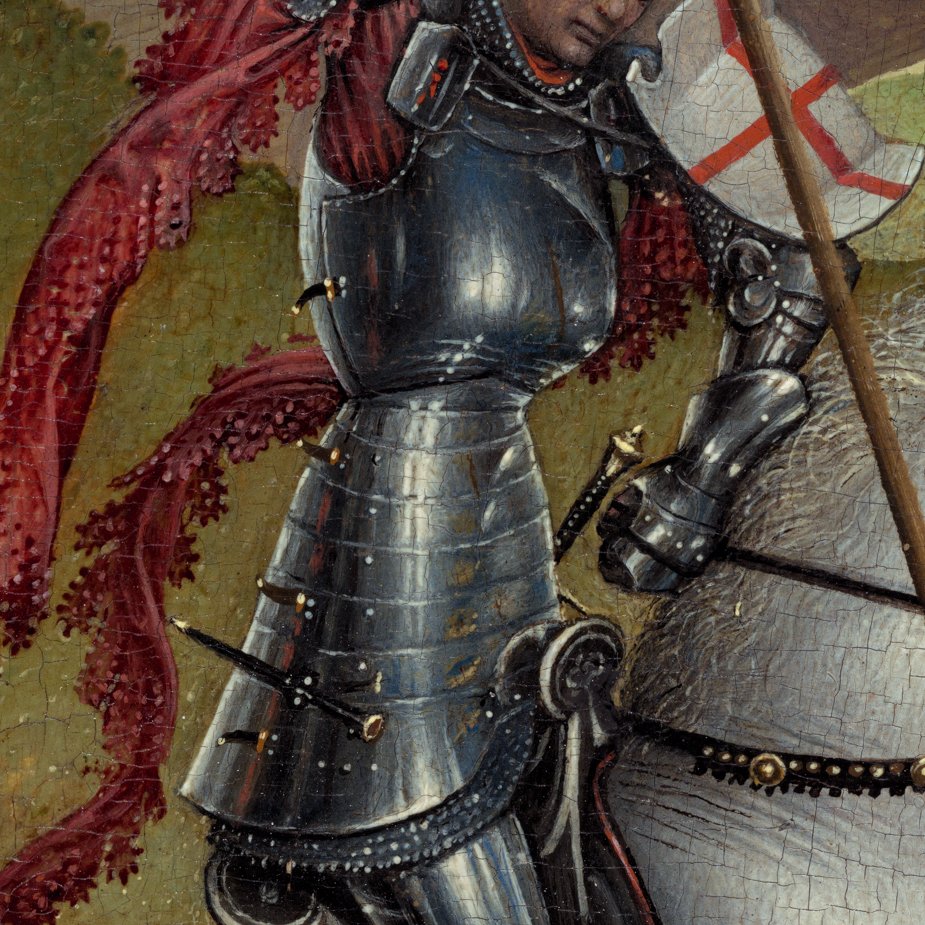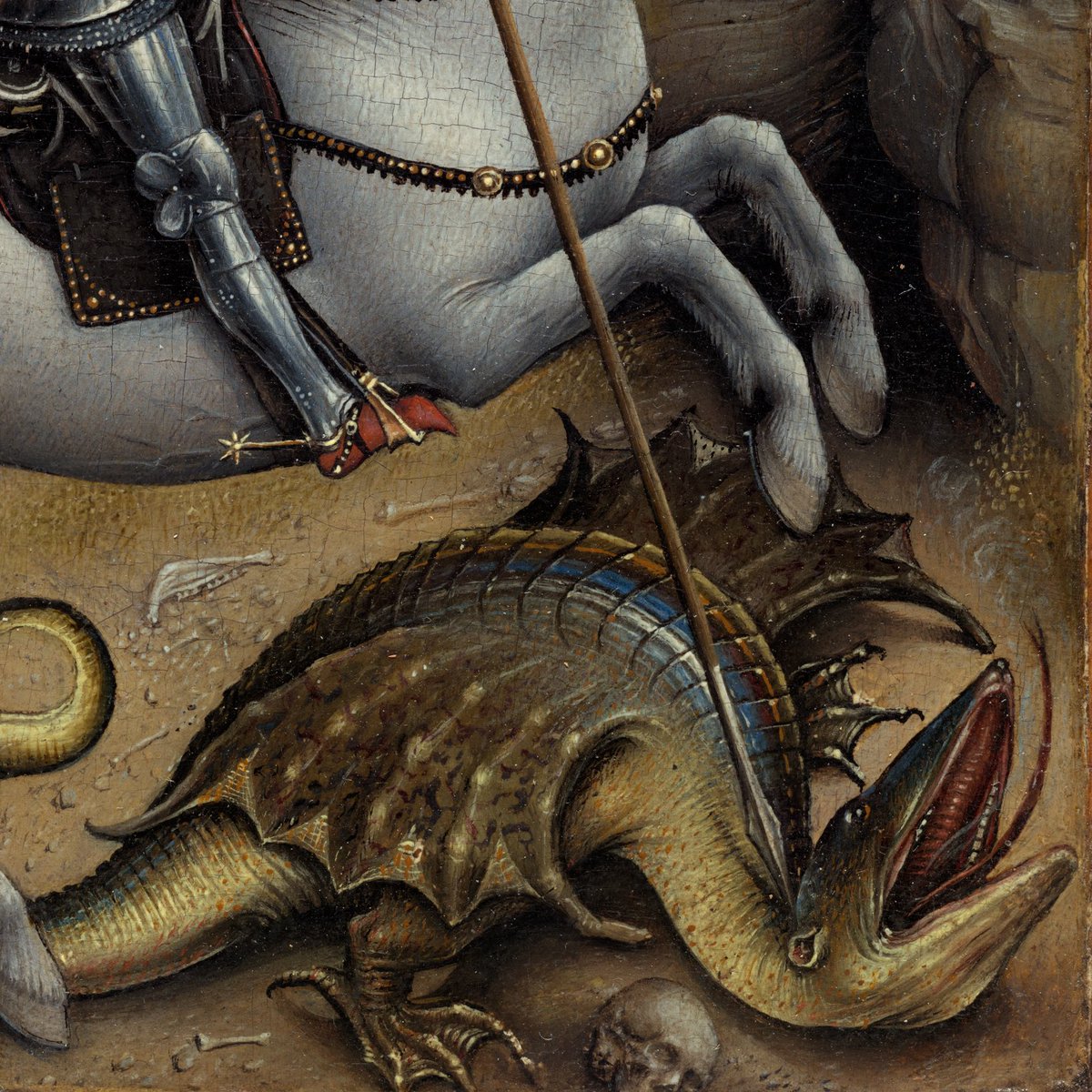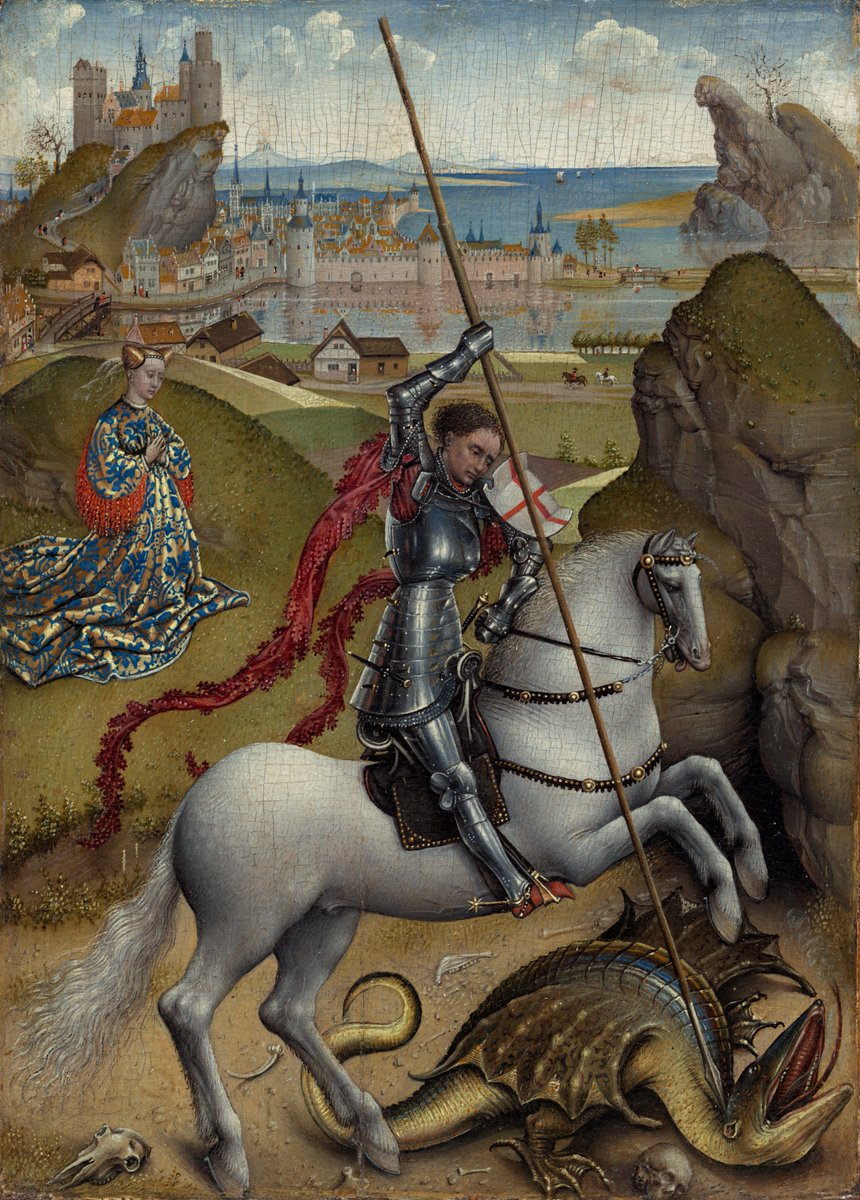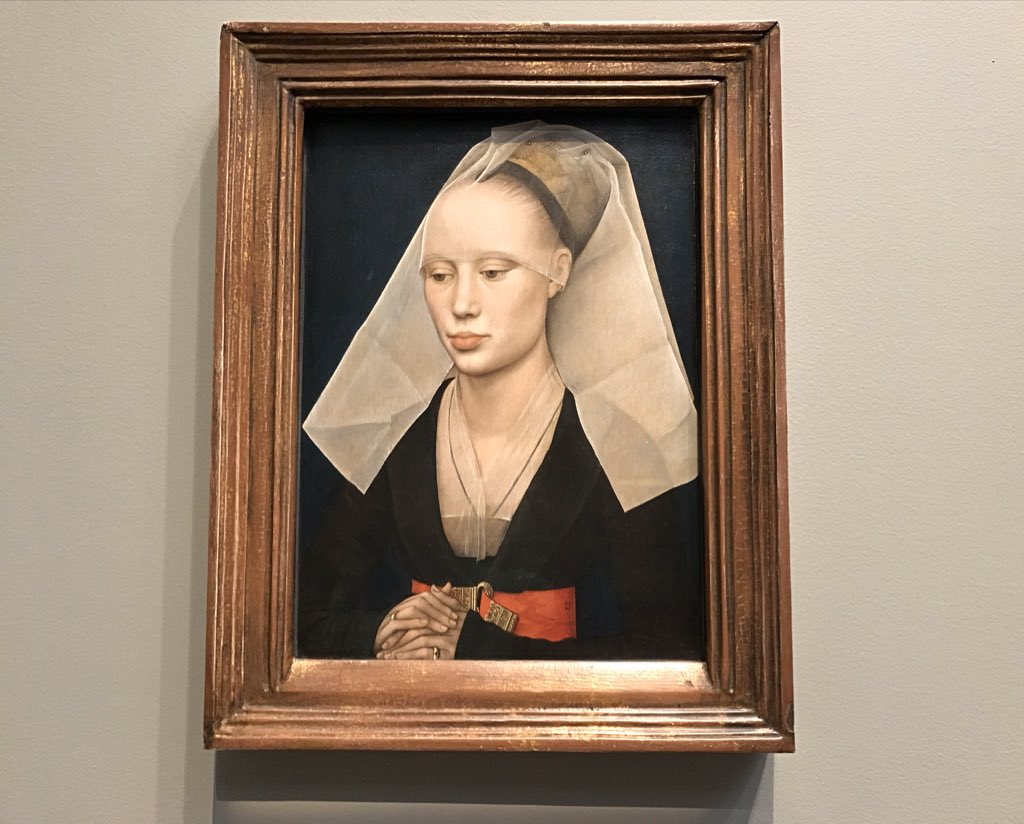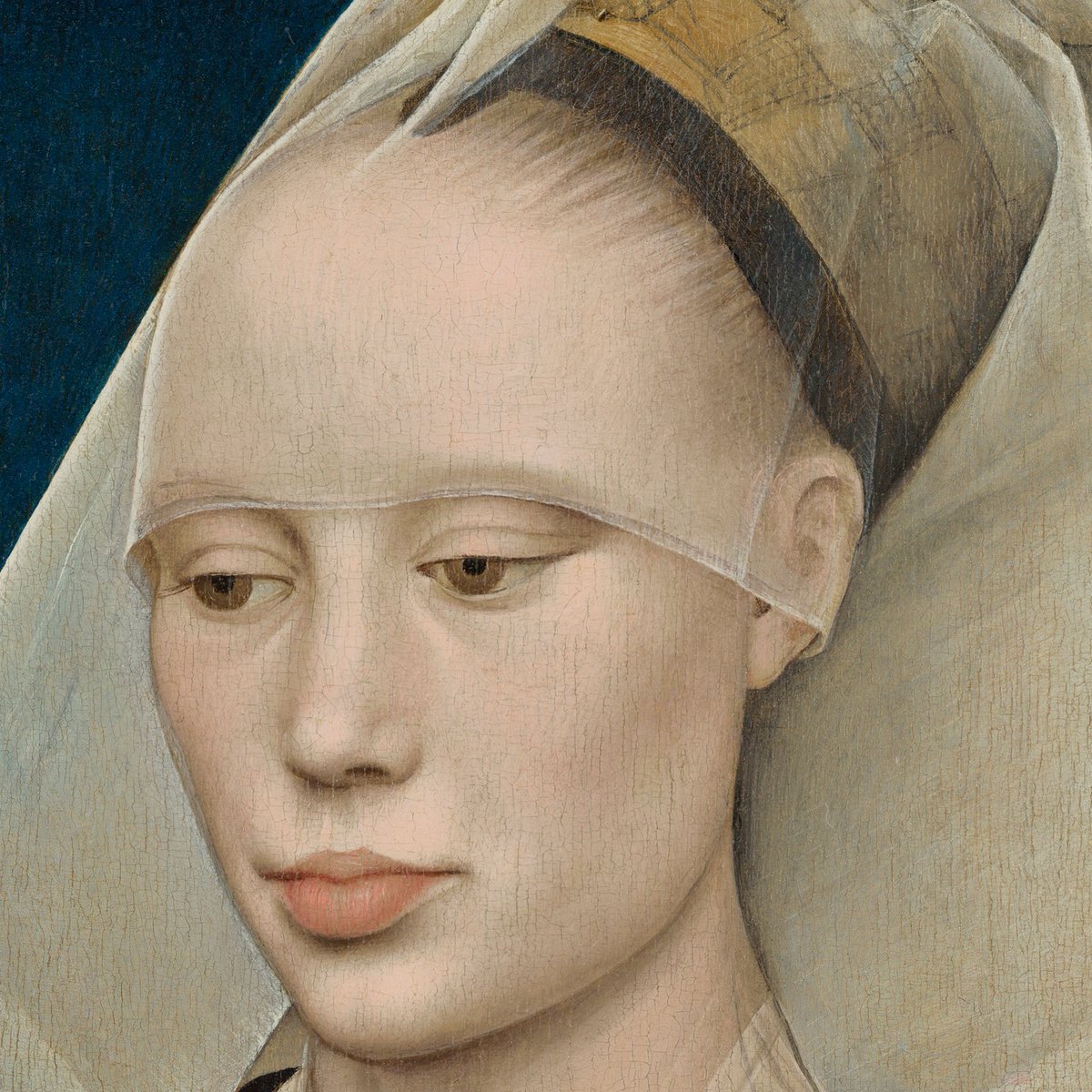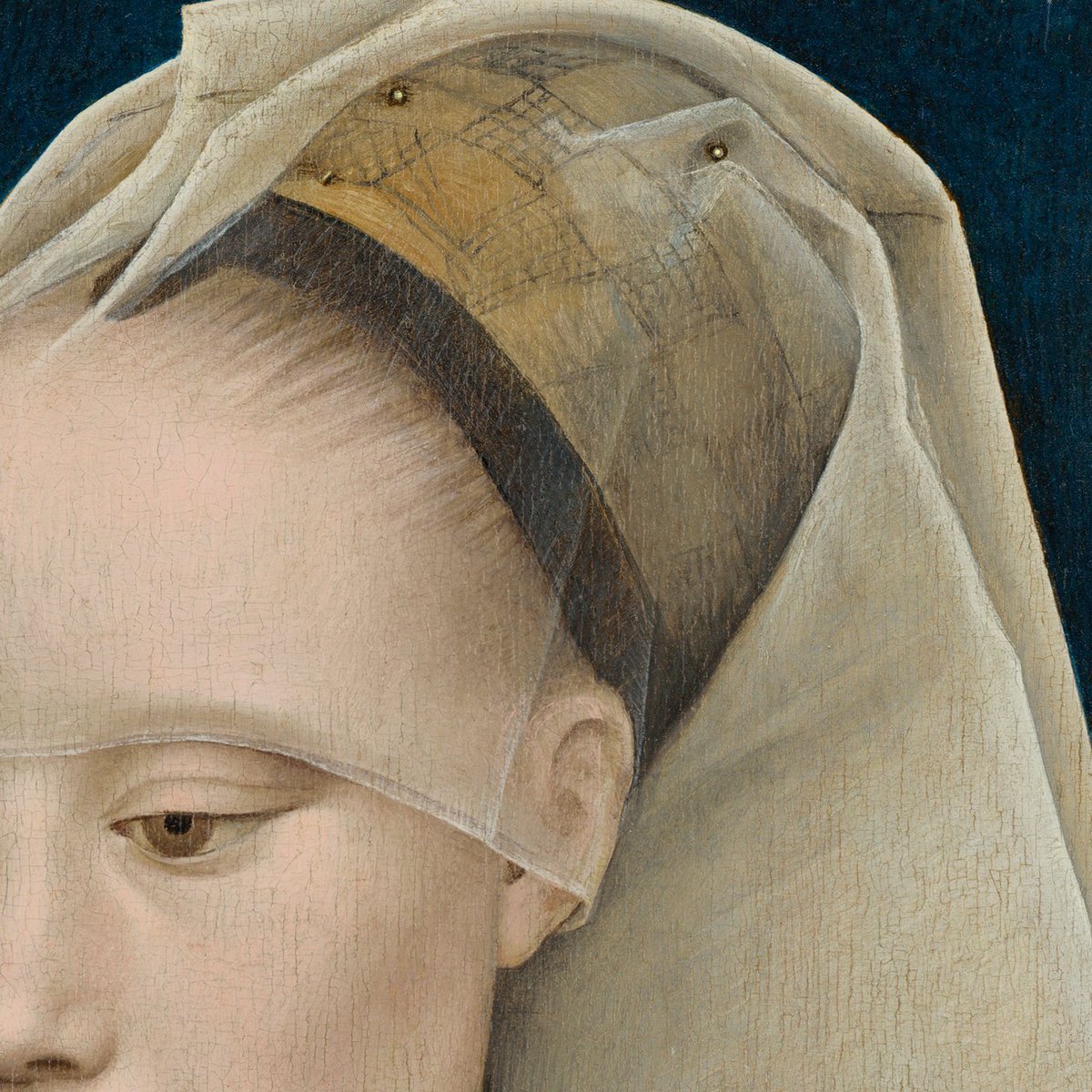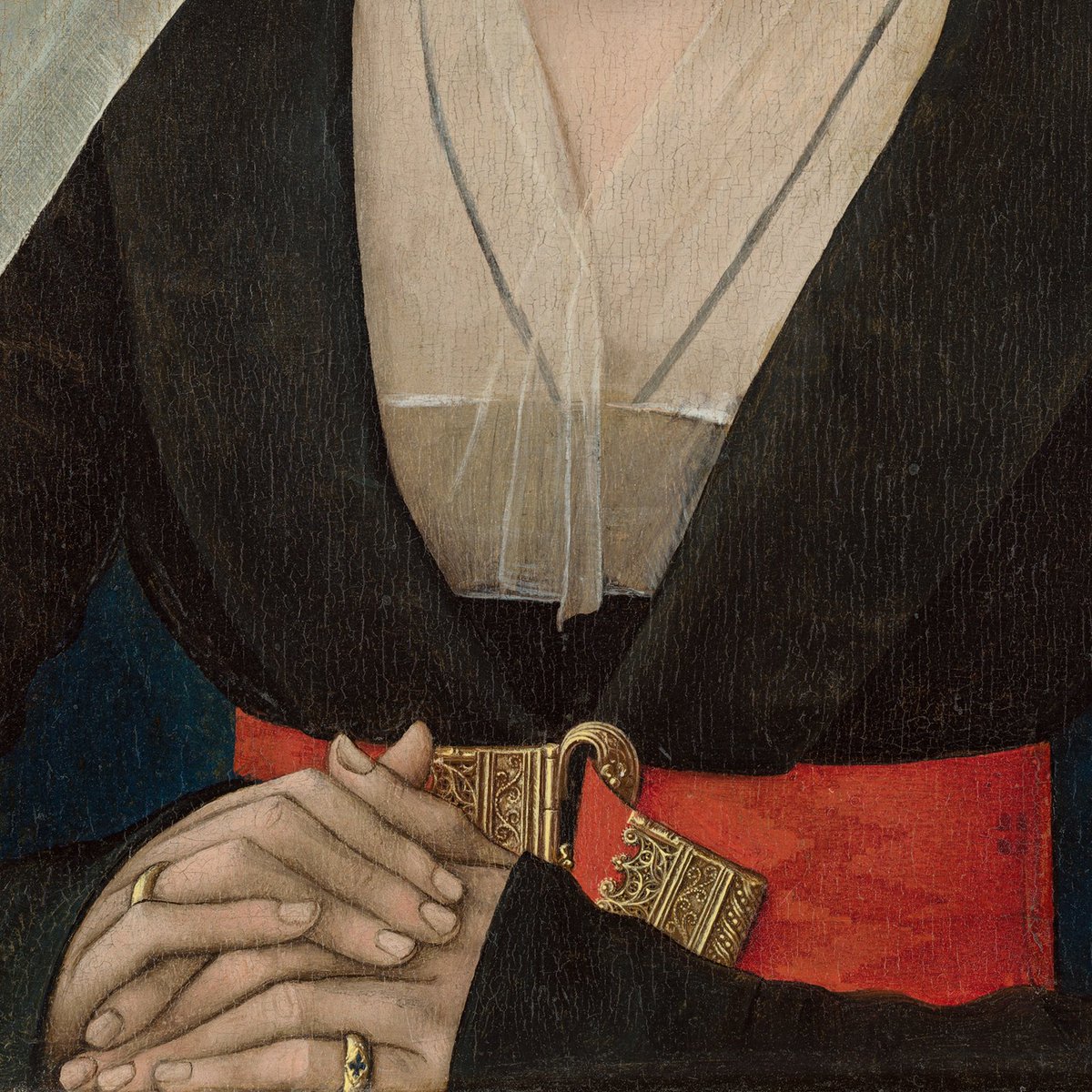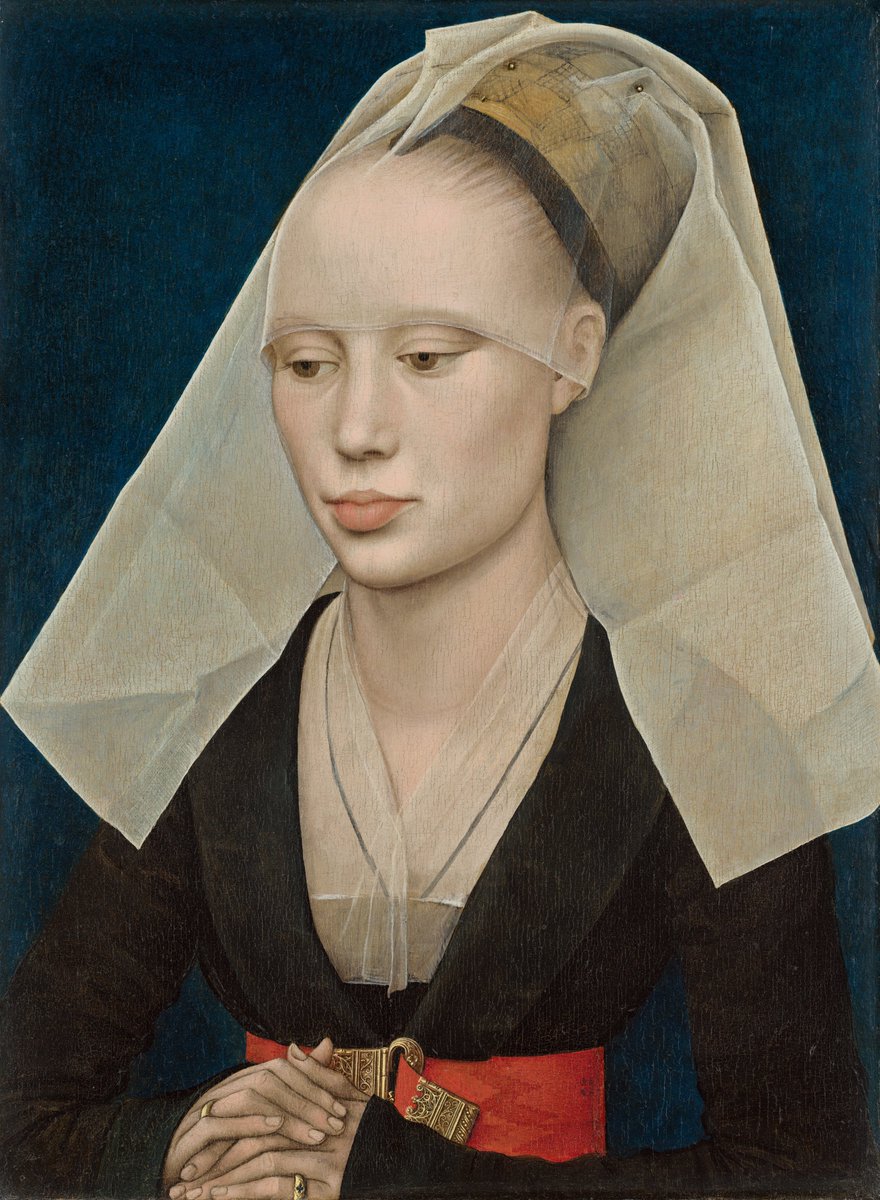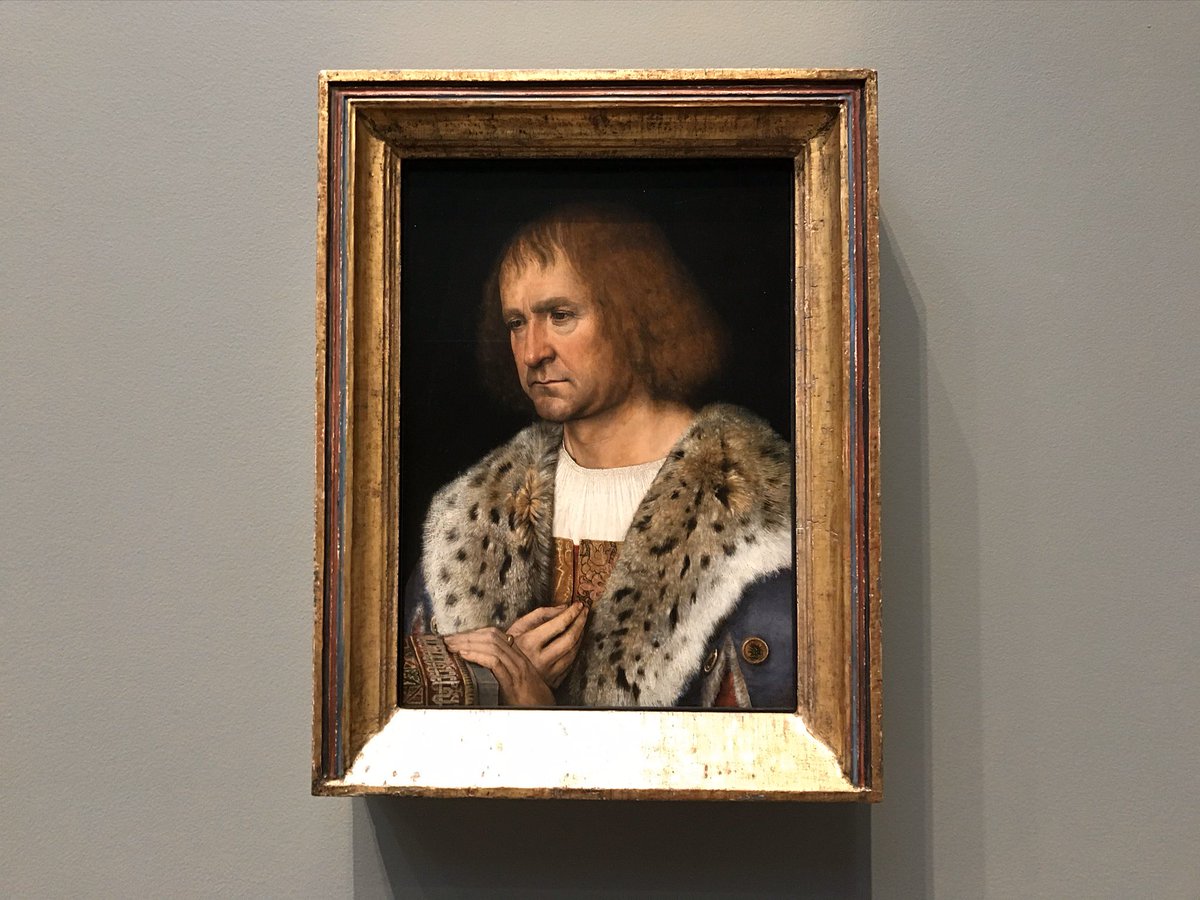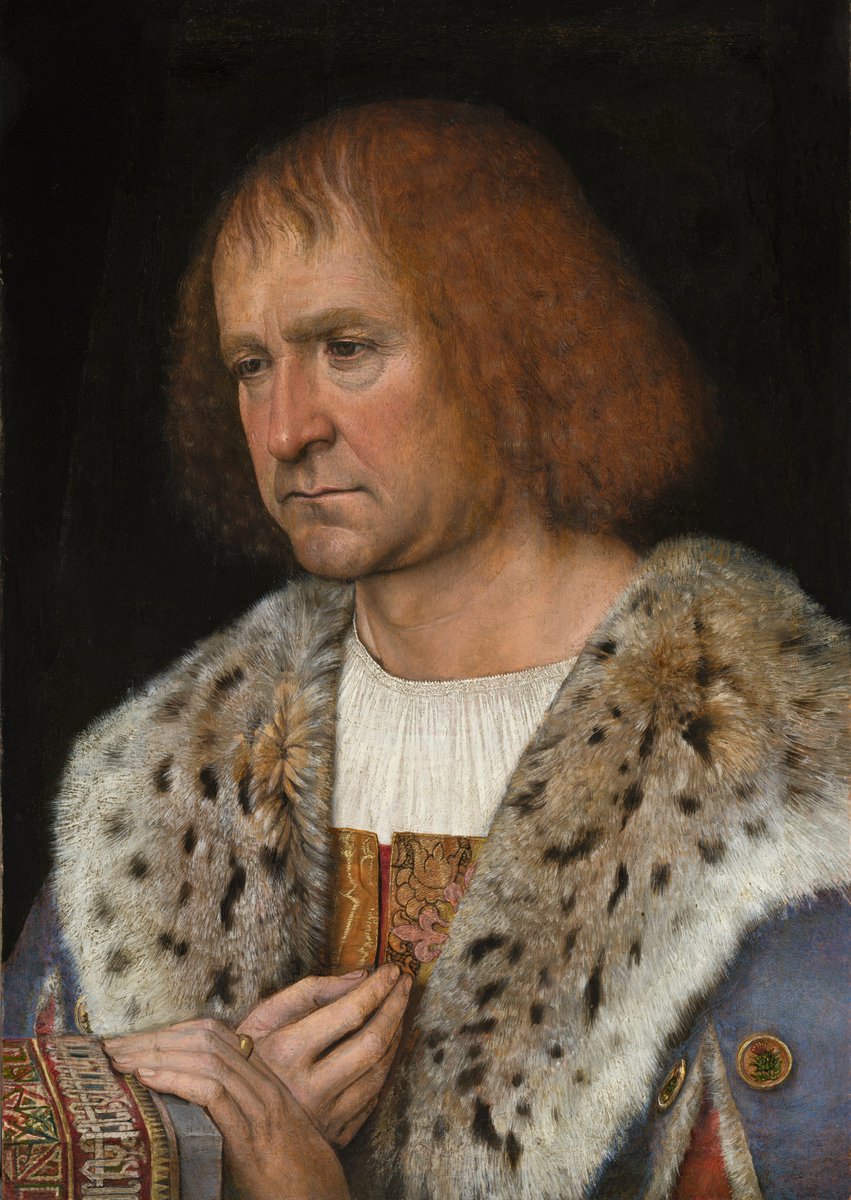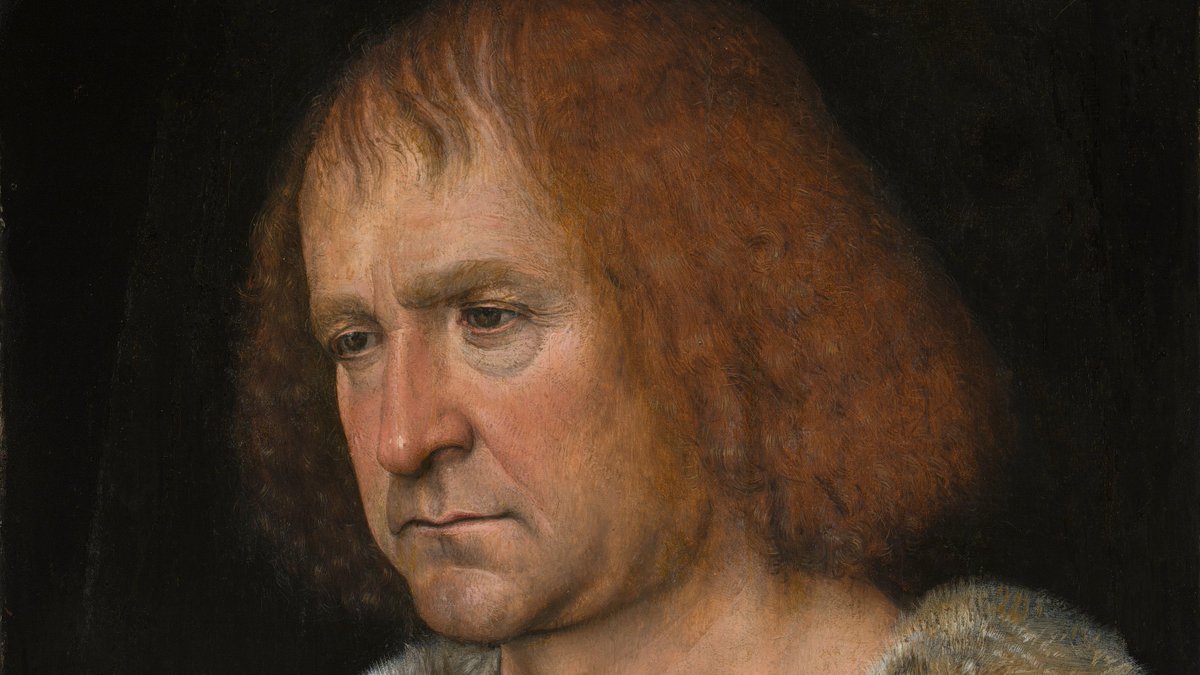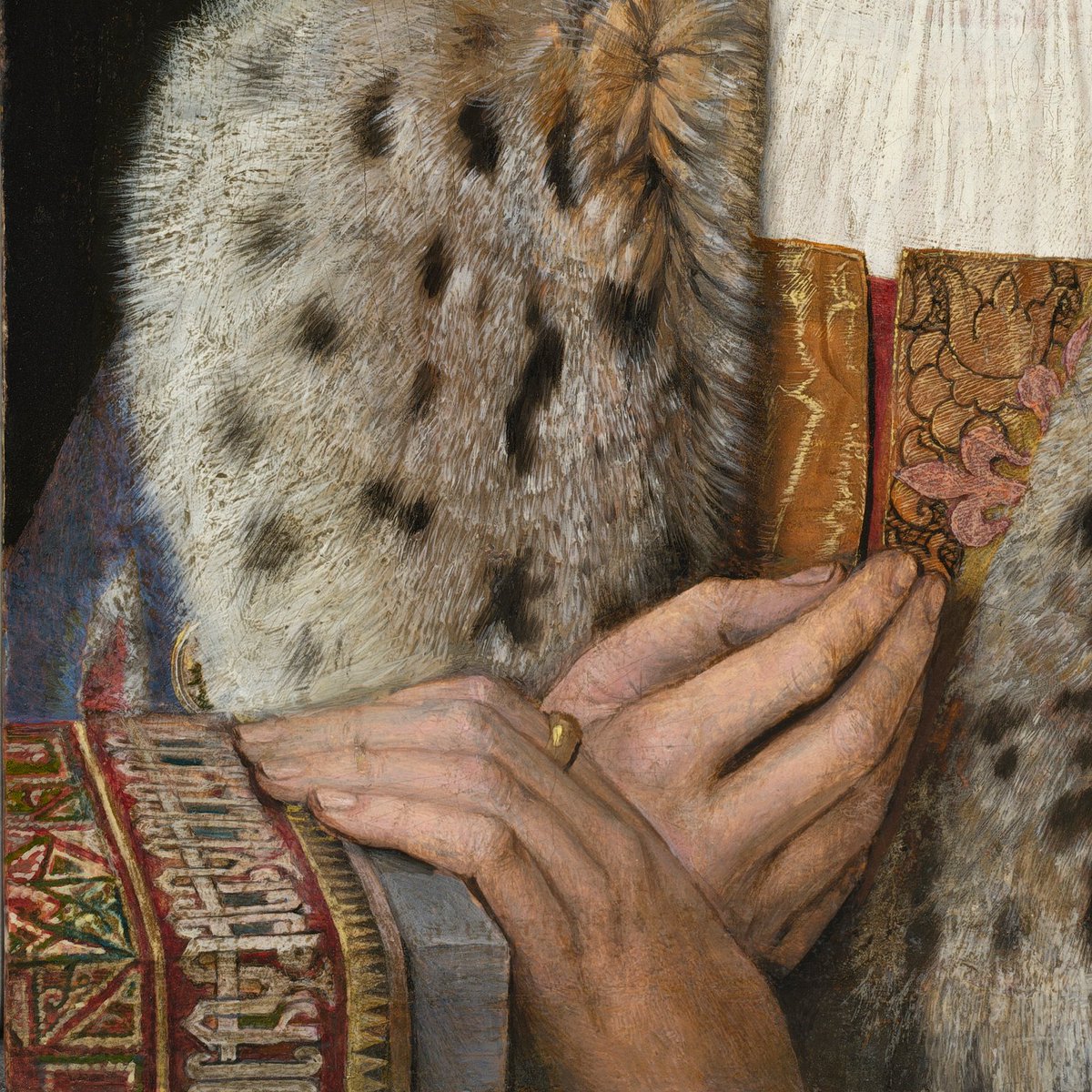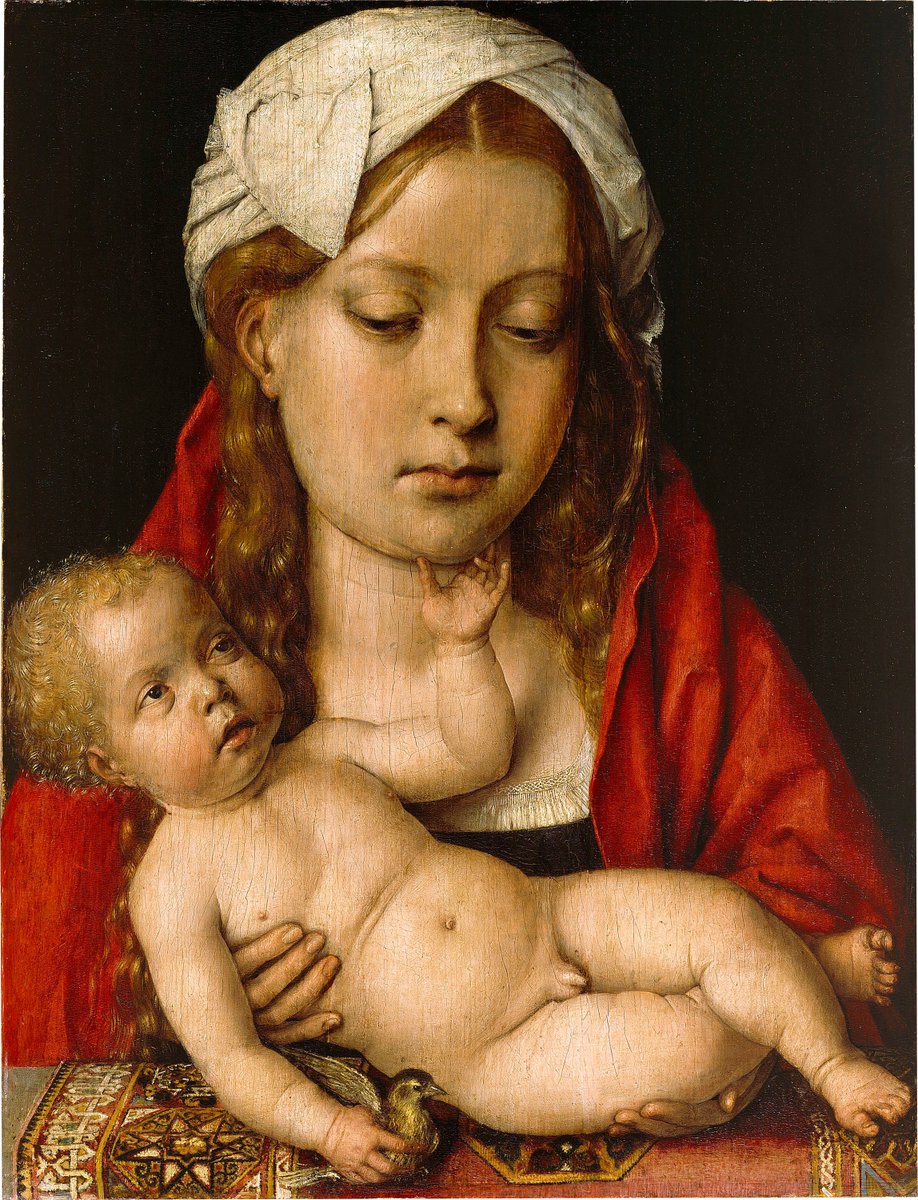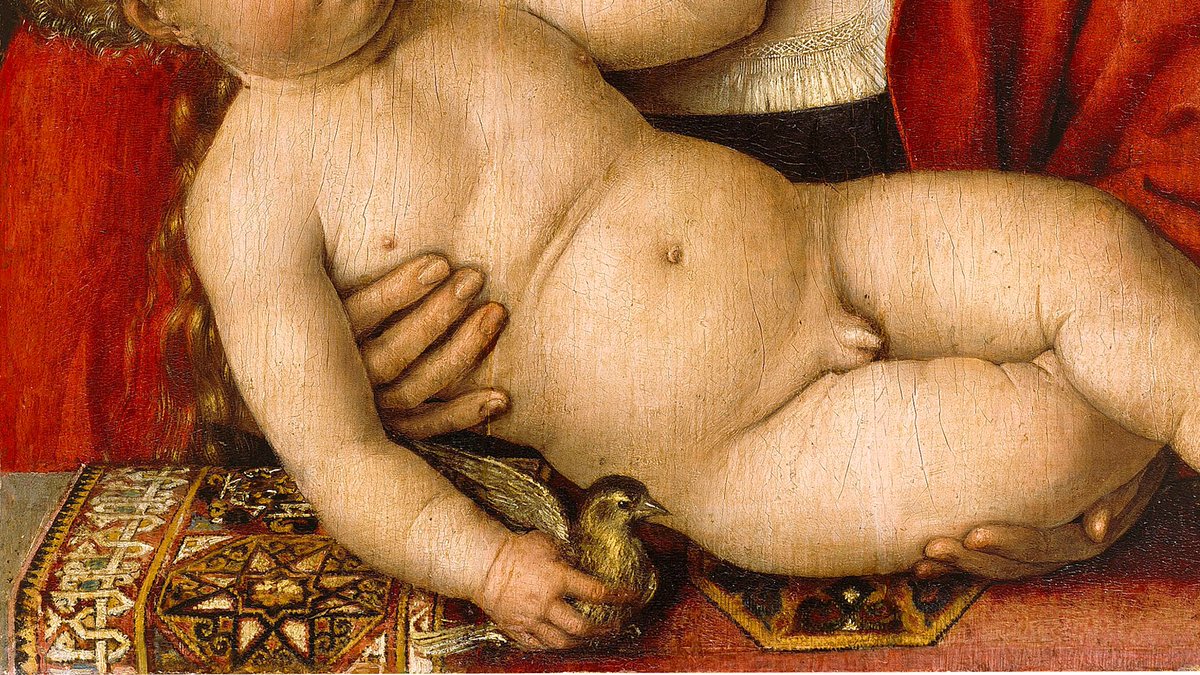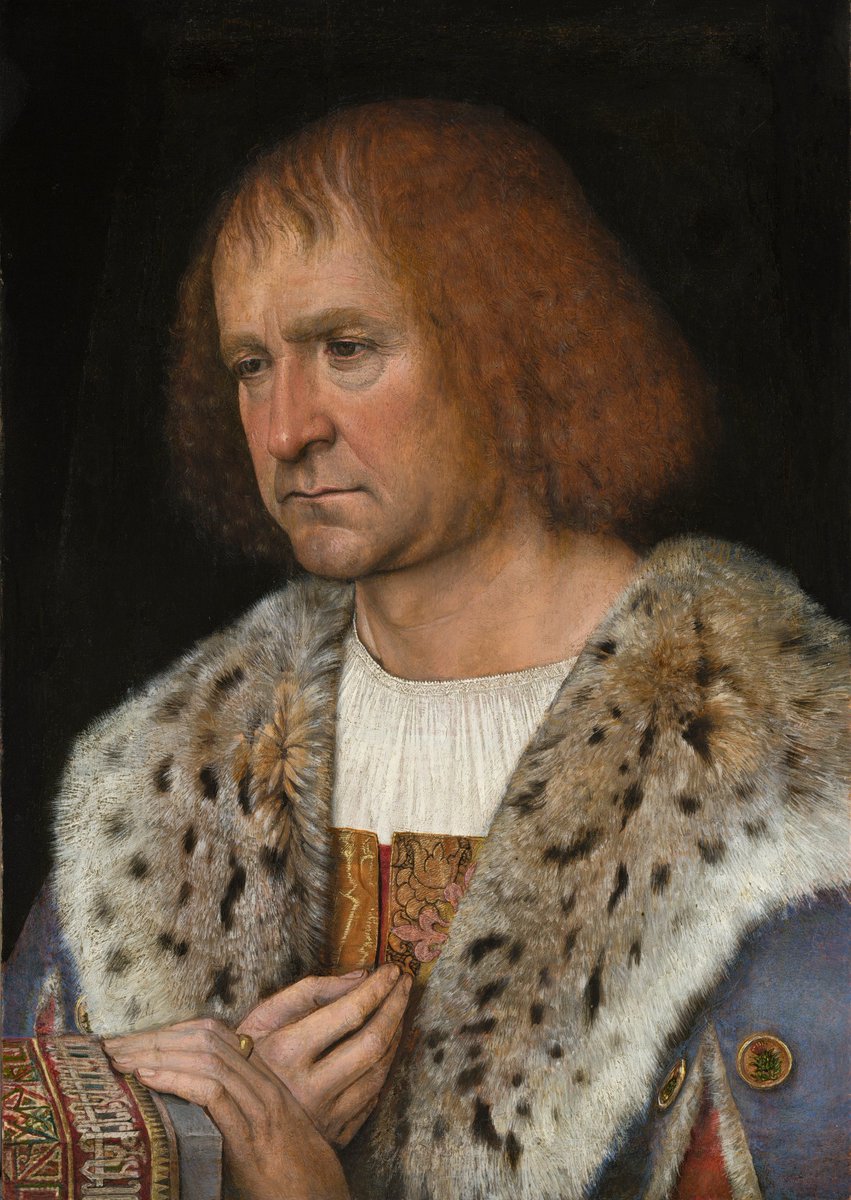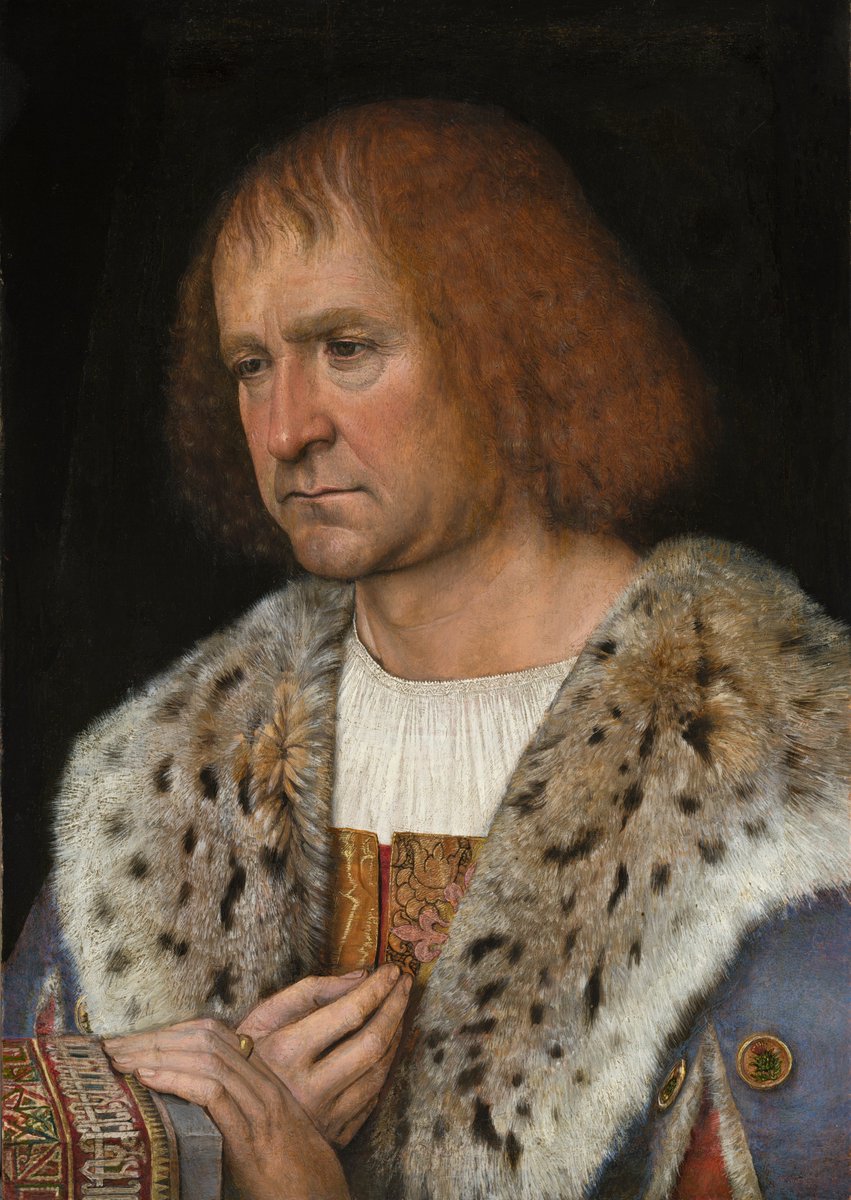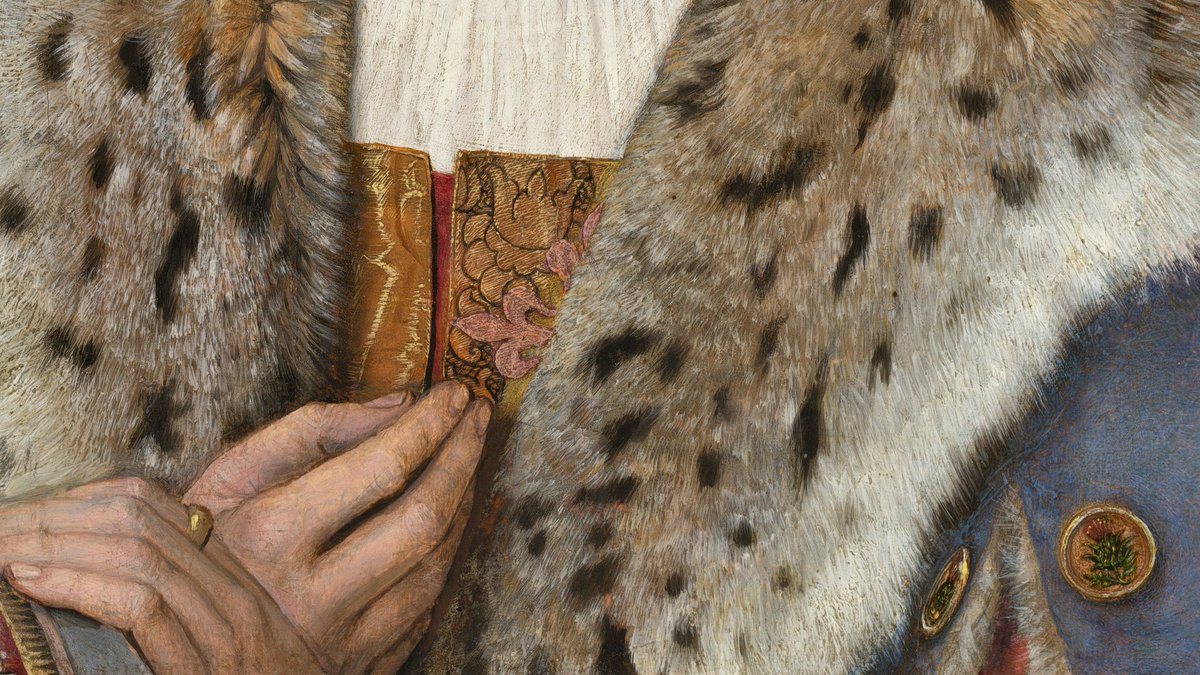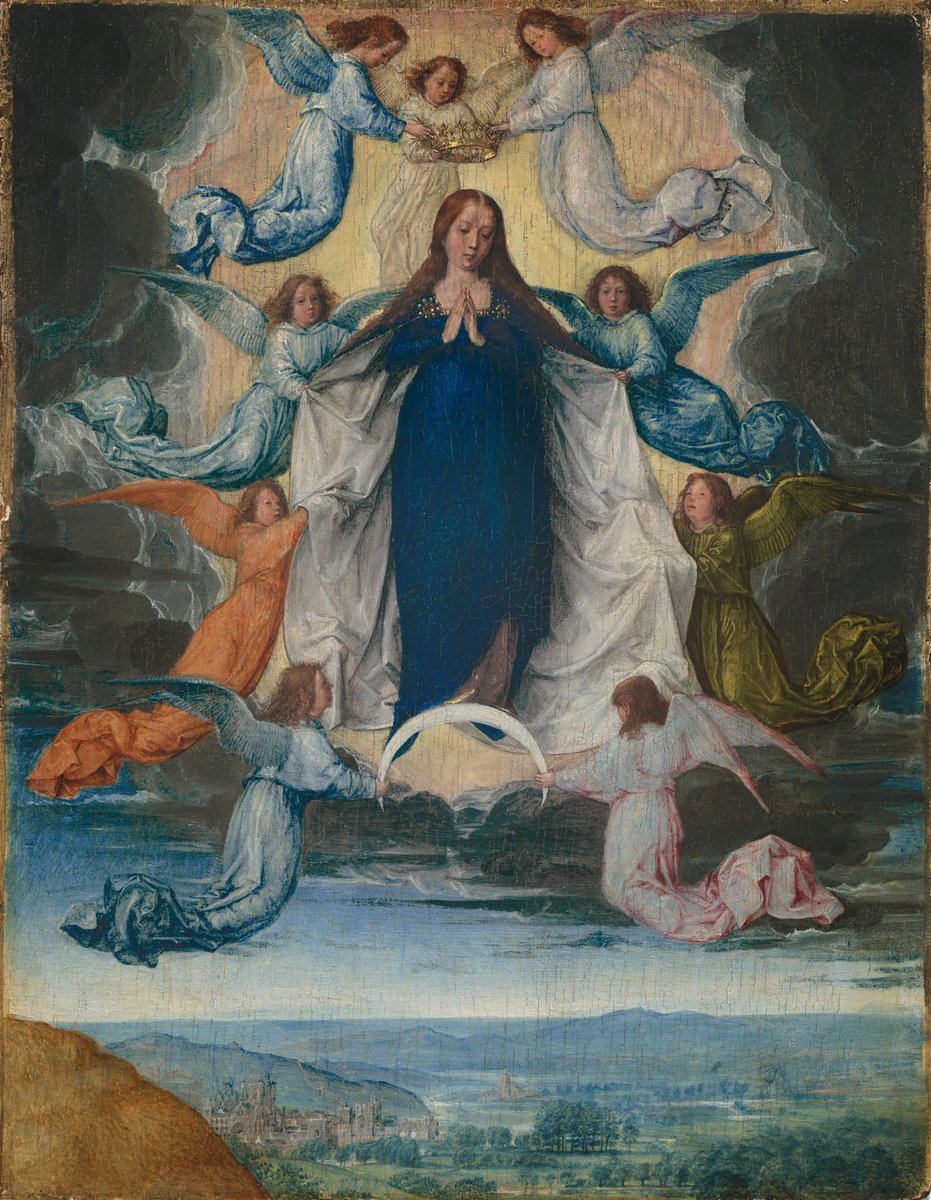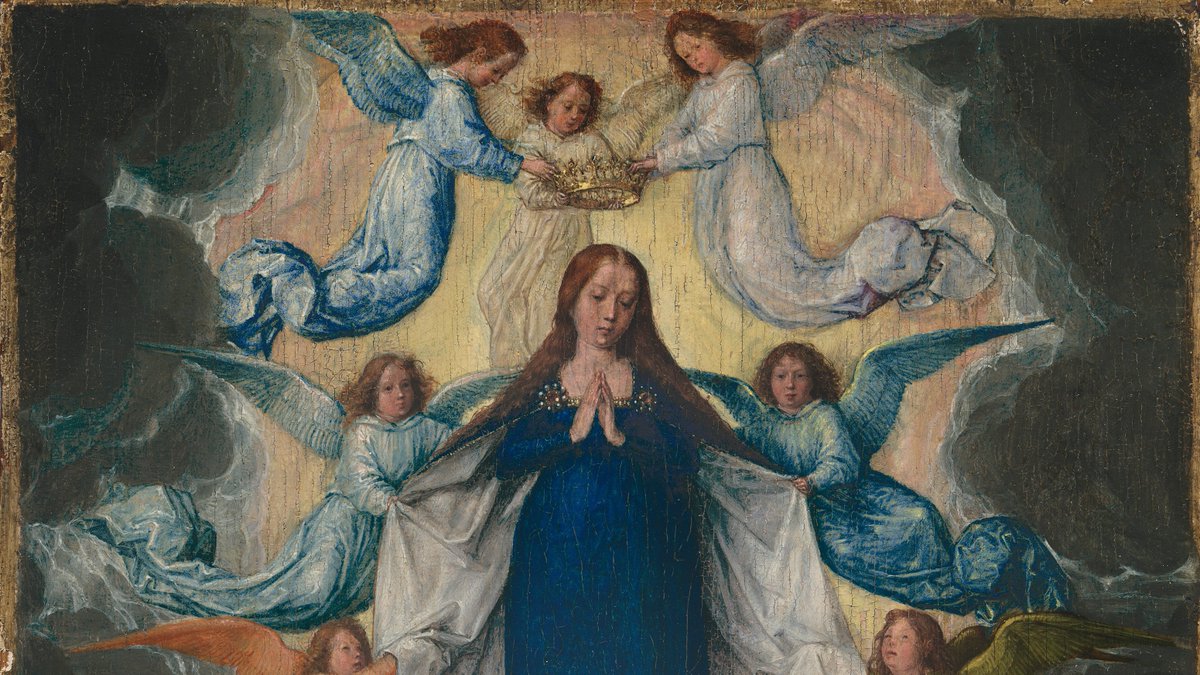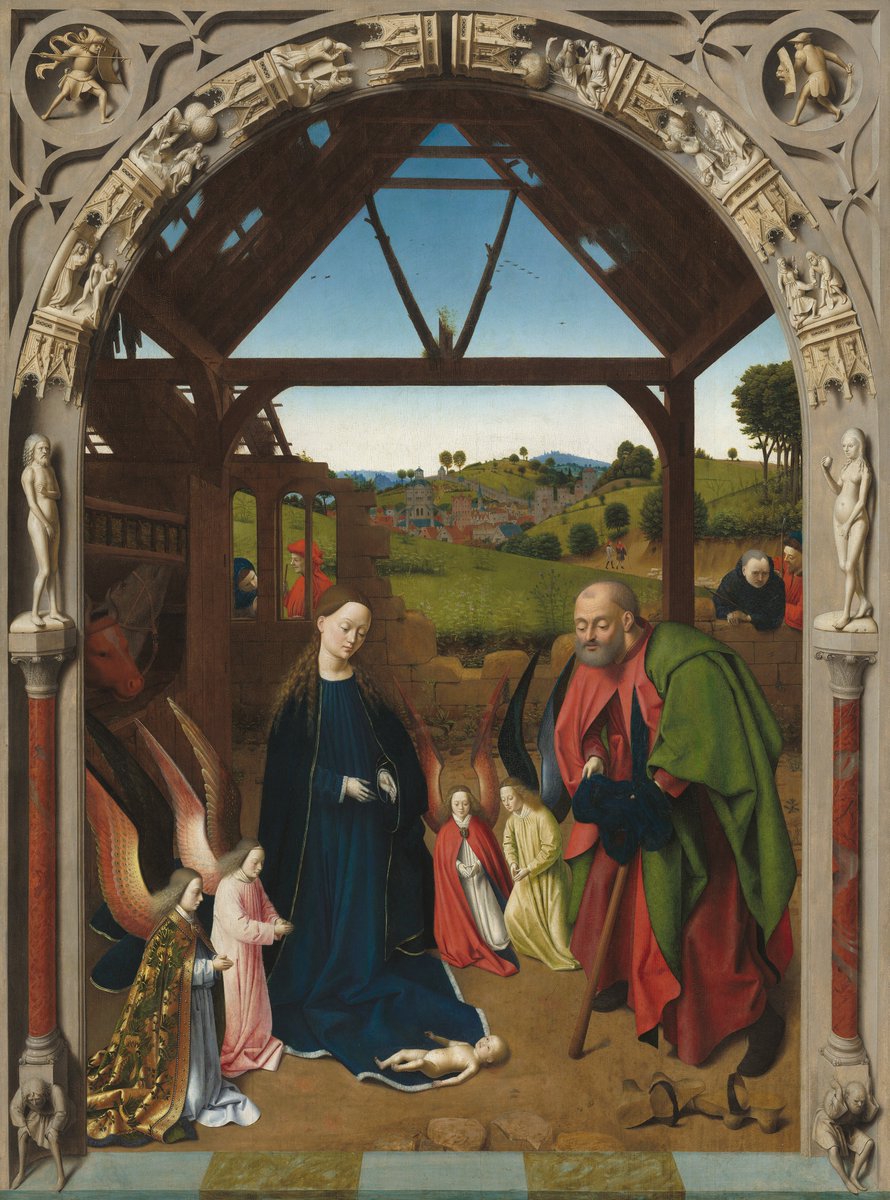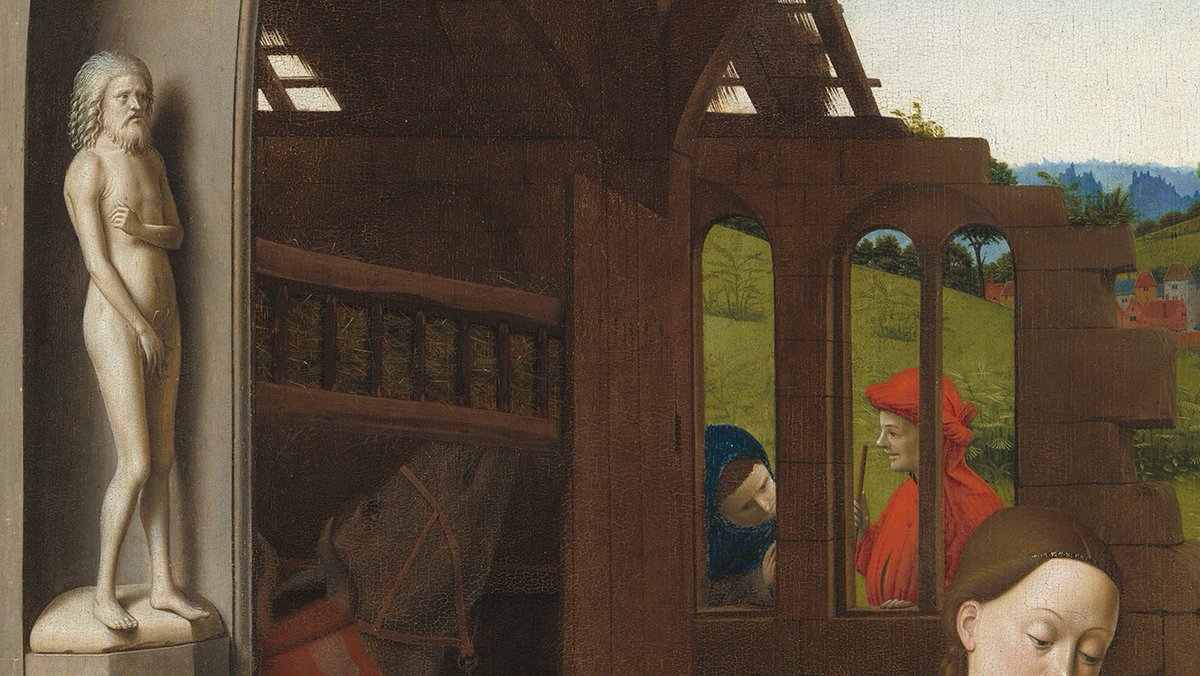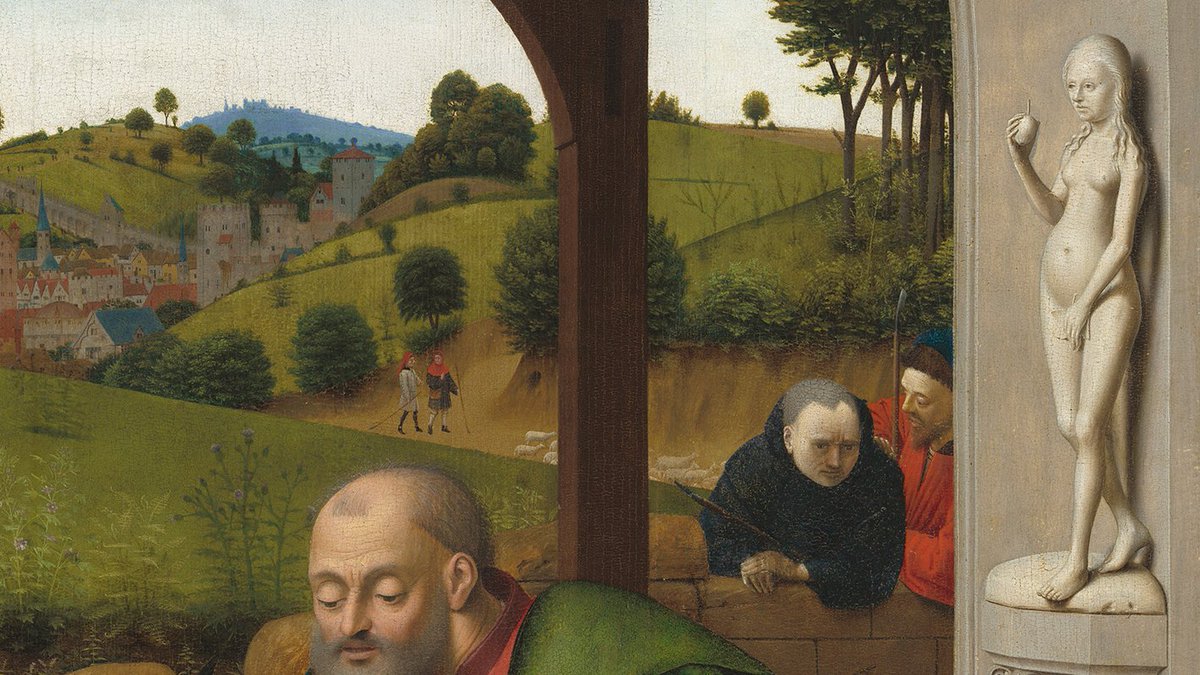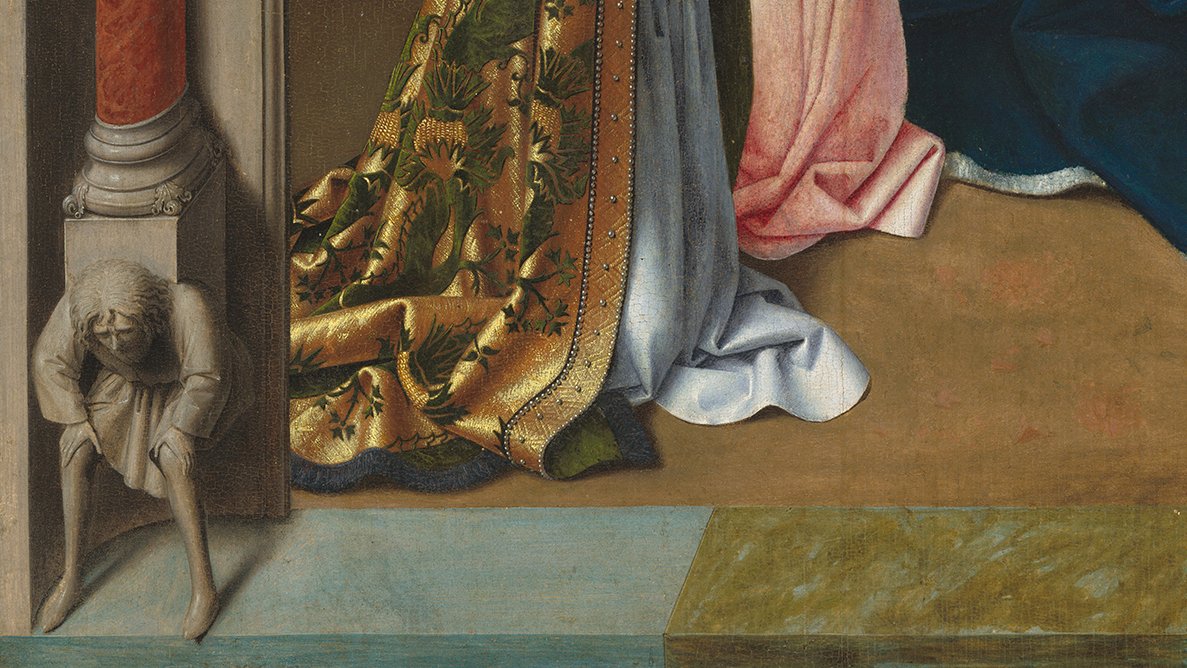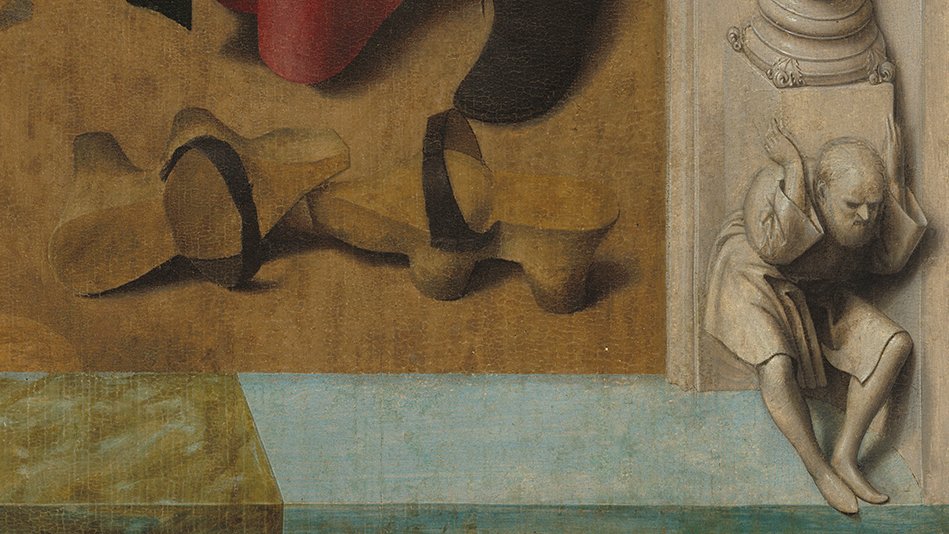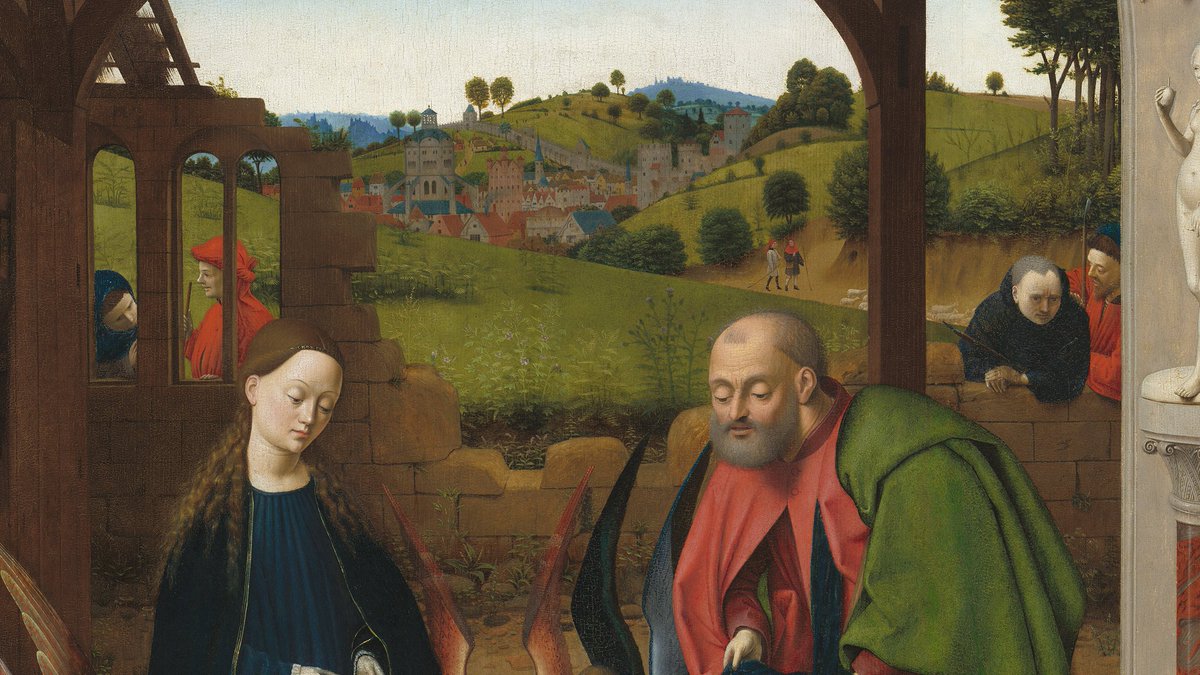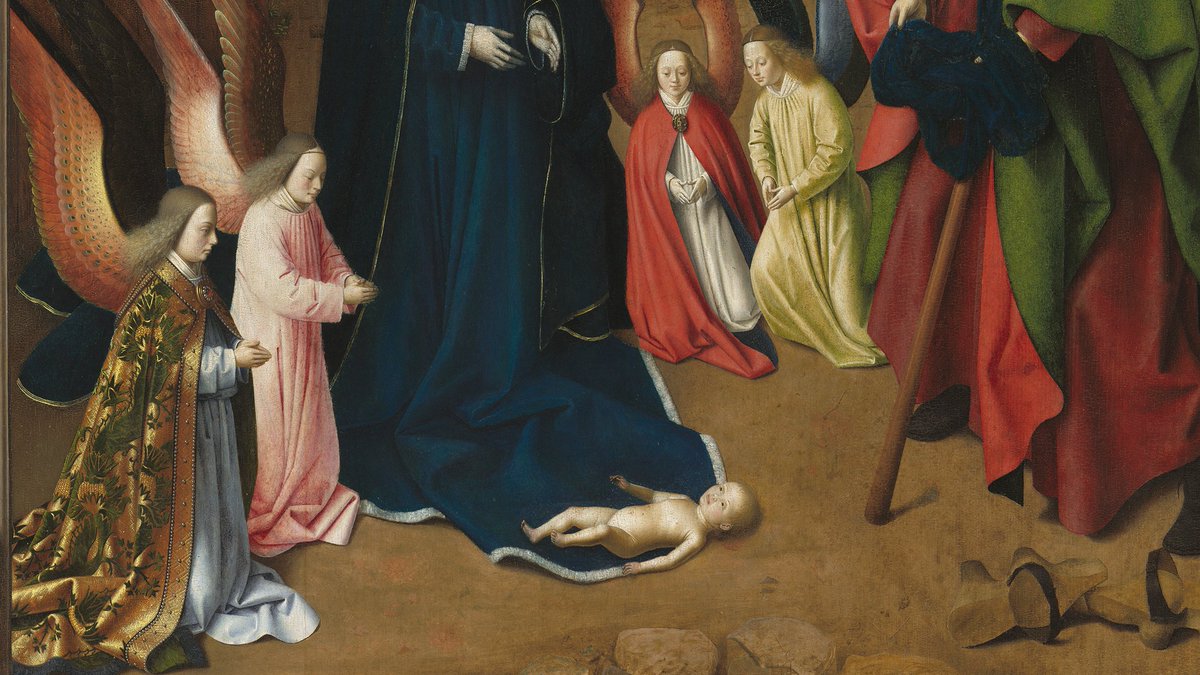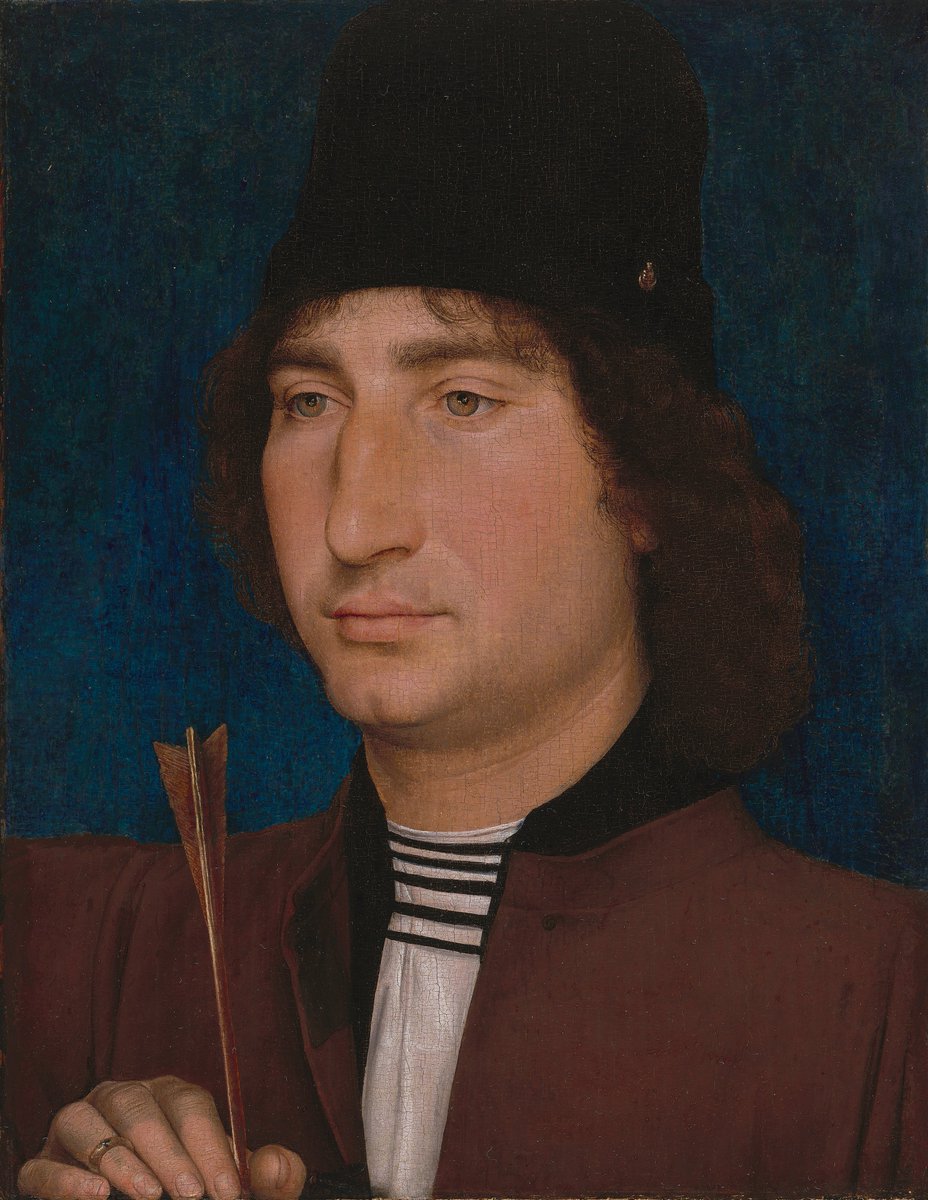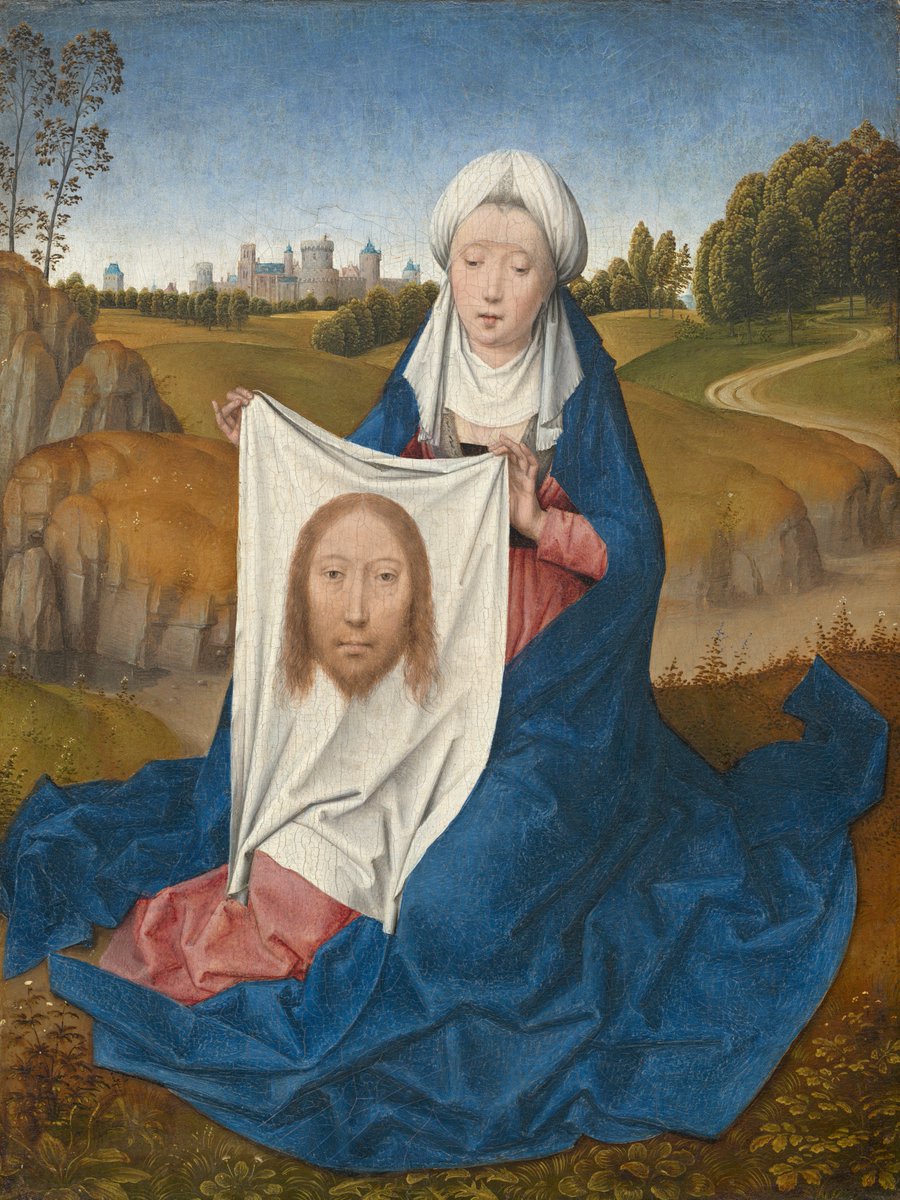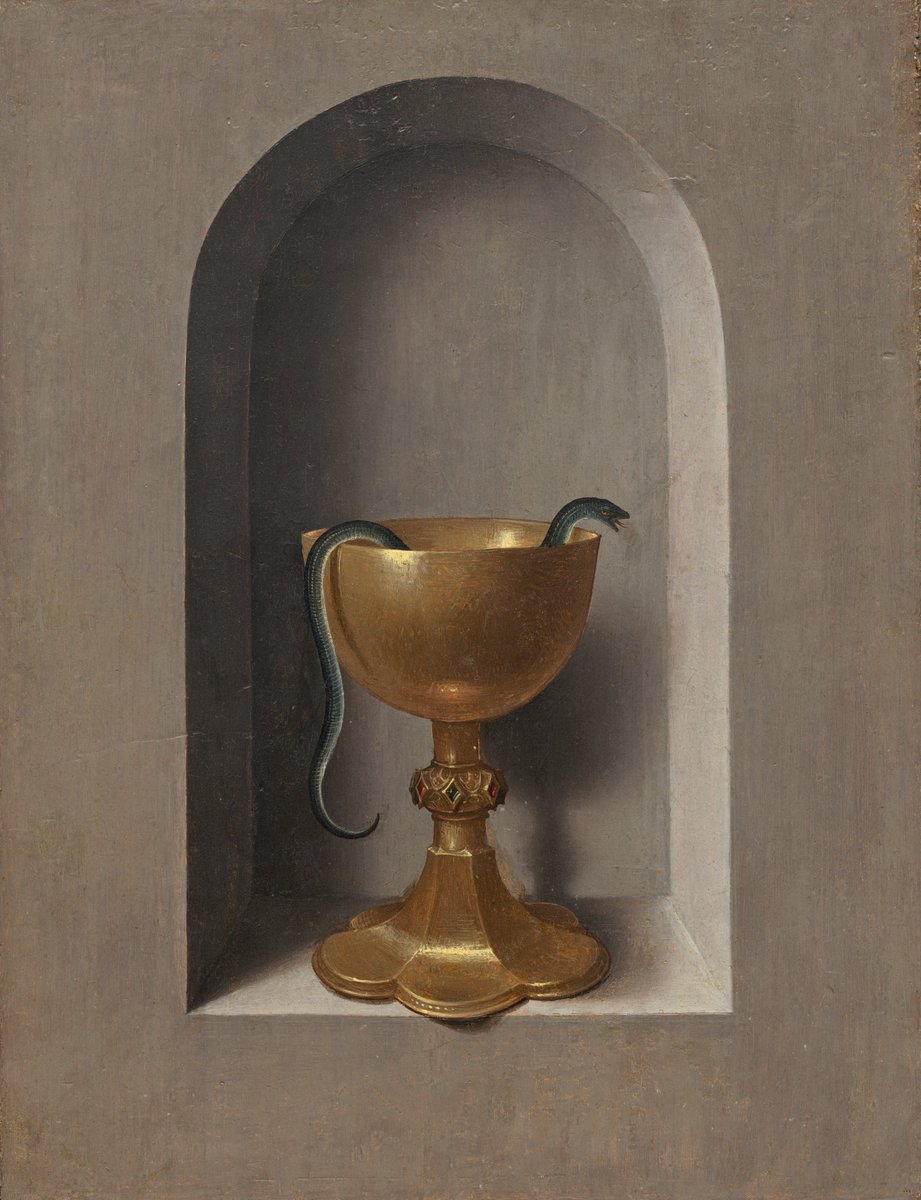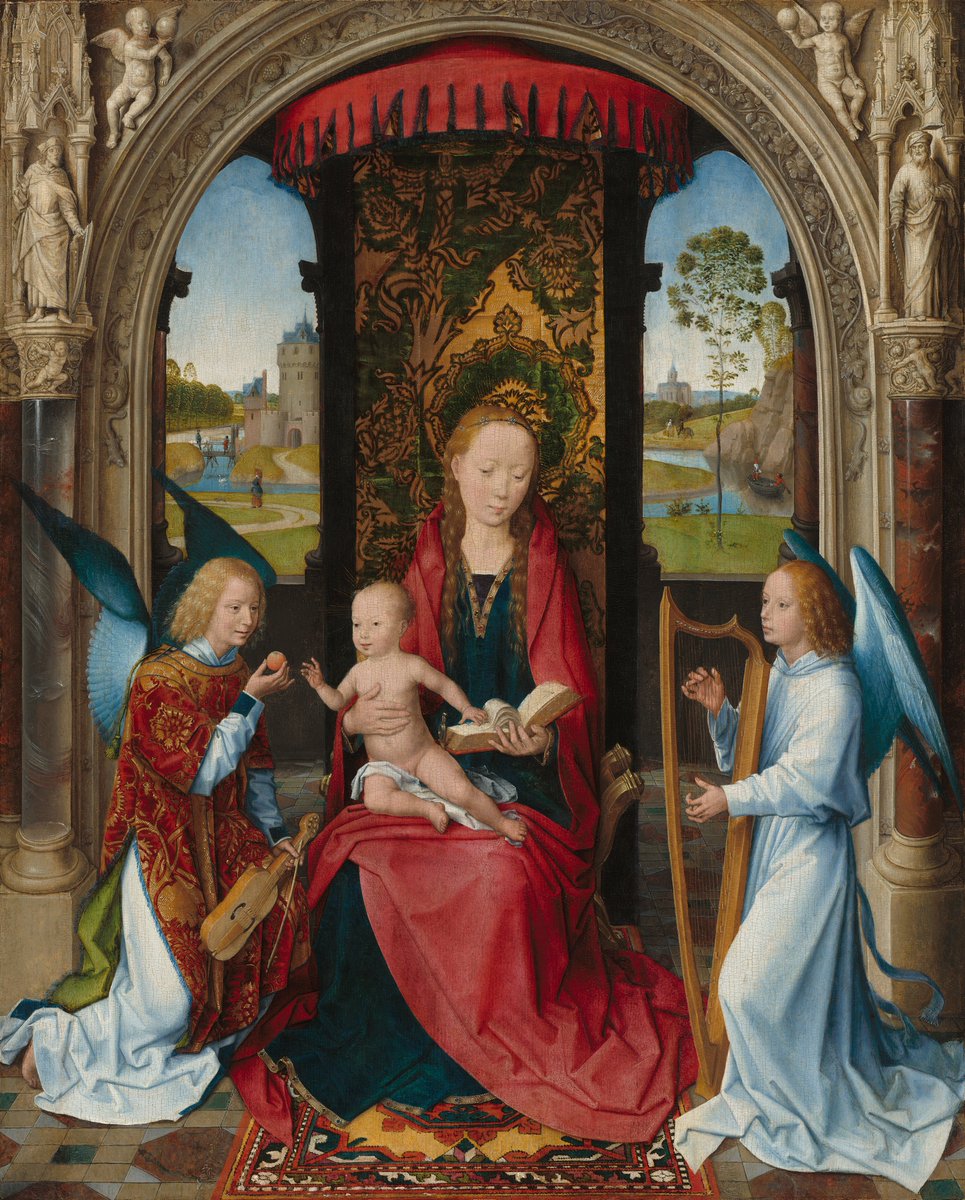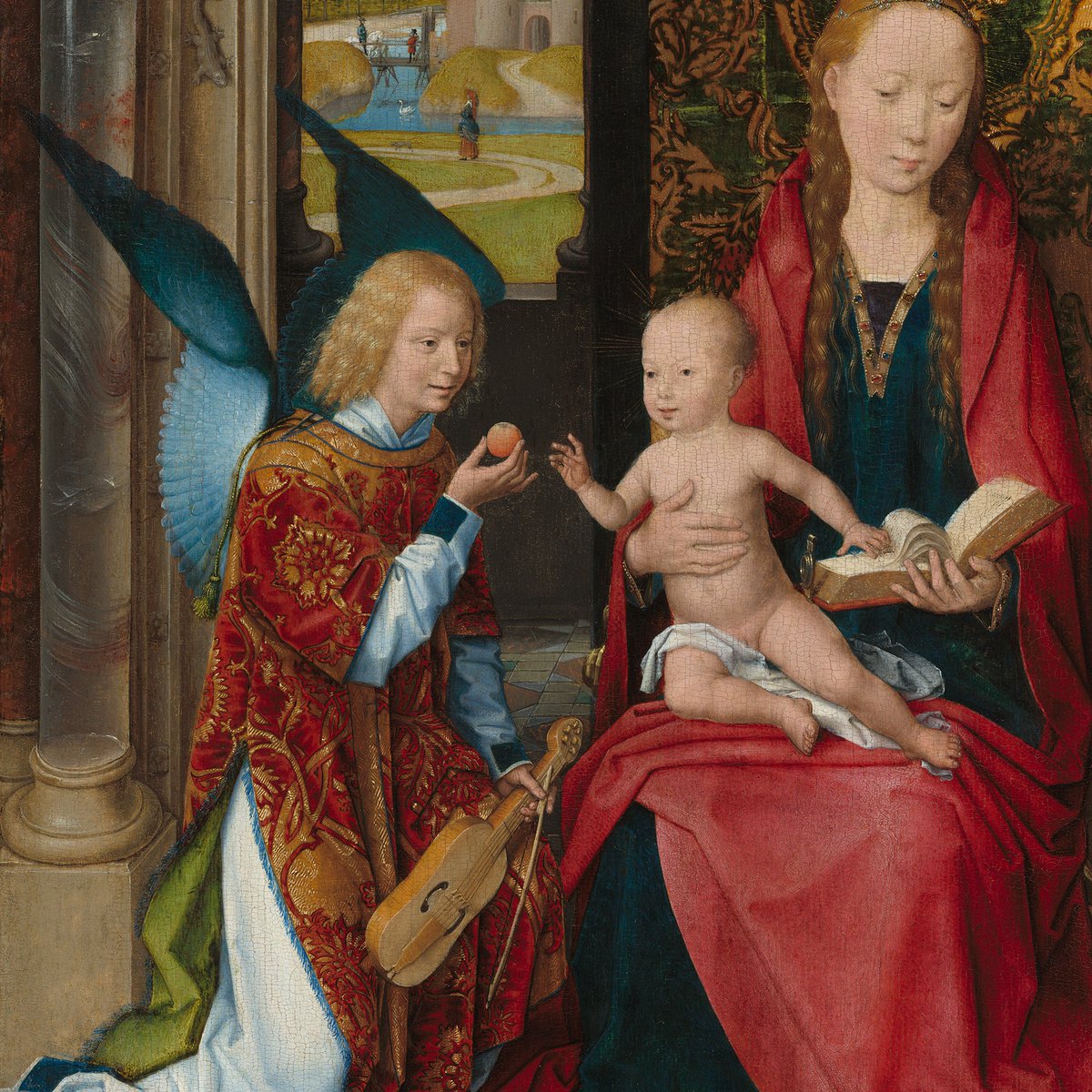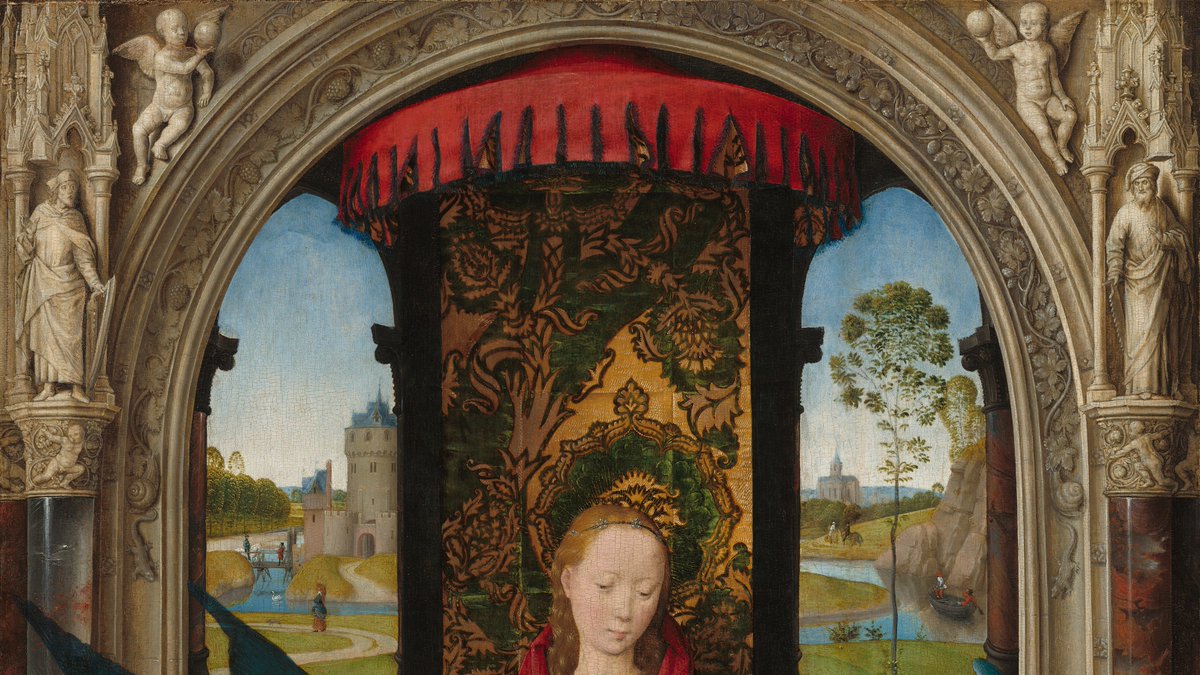Today’s tour explores gallery 39 on the Main Floor of the West Building, which features our collection of early Netherlandish paintings from the 15th and 16th centuries.
See the works included: http://go.usa.gov/xvgcV ">https://go.usa.gov/xvgcV&quo...
See the works included: http://go.usa.gov/xvgcV ">https://go.usa.gov/xvgcV&quo...
Gallery 39 includes works by Rogier van der Weyden, Petrus Christus, Dirck Bouts, Hans Memling, Michel Sittow, Juan de Flandes, and Adriaen Isenbrant made in a region corresponding roughly to present-day Holland, Belgium, Luxembourg, and parts of northern France.
The special mixture of reality, fantasy, and virtuosity that is particular to early Netherlandish painting is apparent in Rogier van der Weyden’s “Saint George and the Dragon” (c. 1432/1435).
Saint George, in black Gothic armor, pins the dragon to the ground with his lance.
At the left kneels the fashionably attired Princess Cleodolinda who was to have been sacrificed to the dragon.
At the left kneels the fashionably attired Princess Cleodolinda who was to have been sacrificed to the dragon.
George was a Roman soldier living in third-century Cappadocia, but the setting here has been transformed from ancient Asia Minor to the contemporary Belgian countryside.
Passing through a series of overlapping hills, we come upon a walled city surrounded by water and dominated by a castle perched atop a fantastic mountain. This scene is almost certainly imaginary and yet is rendered with the greatest clarity and realism.
The attention to specific detail has led to the suggestion that Rogier used a magnifying glass.
His interest in depiction of light—reflecting on George& #39;s armor and the dragon& #39;s scales—and atmospheric effects shows the influence of Jan van Eyck.
His interest in depiction of light—reflecting on George& #39;s armor and the dragon& #39;s scales—and atmospheric effects shows the influence of Jan van Eyck.
Stylistically related to manuscript illumination, this painting is likely an early work and may originally have been part of a larger ensemble, perhaps a diptych, that was most likely used for private devotion.
Gallery 39 also includes Rogier van der Weyden’s “Portrait of a Lady” (c. 1460), an outstanding example of the abstract elegance characteristic of the artist’s late portraits.
Although the identity of the sitter is unknown, her air of self–conscious dignity suggests that she is a member of the nobility. Her costume and severely plucked eyebrows and hairline are typical of those favored by highly placed ladies of the Burgundian court.
The dress almost merges with the background while the spreading headdress frames and focuses attention upon her face.
Light falls with exquisite beauty along the creases of the sheer veiling over her head, and gentle shadows mark her fine bone structure.
The gold filigree of her belt buckle is rendered with meticulous precision and the scarlet belt sets off her delicately clasped hands.
The gold filigree of her belt buckle is rendered with meticulous precision and the scarlet belt sets off her delicately clasped hands.
The downcast eyes, the firmly set lips, and the tense fingers reflect this woman& #39;s mental concentration and together with the formality of her costume and pose, present an image of passionate austerity.
Read more about the portrait: http://go.usa.gov/xvgaT ">https://go.usa.gov/xvgaT&quo...
Read more about the portrait: http://go.usa.gov/xvgaT ">https://go.usa.gov/xvgaT&quo...
Michel Sittow, a northern painter who was born in Estonia on the Baltic Sea but apprenticed in Bruges, was an acclaimed portraitist at the Spanish court.
After Queen Isabella& #39;s death in 1504, his career took him to several northern European centers, including Burgundy, where he probably painted “Portrait of Diego de Guevara (?)” (c. 1515/1518).
The sitter gazes with a serious expression, not at the viewer, but at an unseen point beyond the picture& #39;s frame.
The ornate carpet covering the stone parapet on which his hand rests provided scholars with an important clue that led to the discovery of the object of his concentration—a painting of the Madonna and Child, of similar dimensions, in the Gemäldegalerie in Berlin.
In that panel a larger portion of the parapet, covered by the same carpet, appears as a support for the Christ Child.
It seems certain that the Berlin and Washington panels were originally hinged together to form a devotional diptych.
Circumstantial evidence suggests that the Gallery& #39;s portrait represents Diego de Guevara, a nobleman whose family came from Santander in northern Spain, who was a member of the Habsburg court in Burgundy
The embroidered cross of the Spanish Order of Calatrava on his golden doublet supports this identification—after serving in numerous positions of trust in the households of Philip the Fair and Charles V, Don Diego was appointed to the wardenship of that order.
The Assumption of the Virgin” (c. 1500) is one of only two paintings securely documented to be by Michel Sittow.
The painting was originally part of an altarpiece of 47 panels depicting scenes from the life of Christ and the Virgin.
The altarpiece was commissioned by Queen Isabella of Castile but likely not completed at her death in 1504, soon after which the panels were dispersed.
The altarpiece was commissioned by Queen Isabella of Castile but likely not completed at her death in 1504, soon after which the panels were dispersed.
The Gallery organized the first monographic exhibition on Michel Sittow in 2018.
Watch an introduction to that exhibition to learn more about the artist: http://go.usa.gov/xvg2W ">https://go.usa.gov/xvg2W&quo...
Watch an introduction to that exhibition to learn more about the artist: http://go.usa.gov/xvg2W ">https://go.usa.gov/xvg2W&quo...
The “Nativity” (c. 1450), one of Petrus Christus& #39;s most important devotional paintings, emphasizes the sacrificial nature of Christ& #39;s coming and shows the scene as part of a chain of events in the story of the Fall and Redemption of humankind.
Christus’s depiction of the scene is like an act from a mystery or Passion play, the figures clothed in simple Flemish costume and a landscape backdrop of appears to be a Netherlandish town, but would be understood as Jerusalem—the scene of the events of Christ& #39;s Passion.
Christus depicted not only the historical moment of Jesus& #39;s birth but also the enactment of the first Mass, an image deriving in part from the revelation of Saint Bridget, which had become the conventional visualization of the Nativity by the early 15th century.
Gallery 39 includes three paintings by Hans Memling: “Portrait of a Man with an Arrow” (c. 1470/1475), the two-sided work of “Saint Veronica” and “Chalice of Saint John the Evangelist” (c. 1470/1475), and “Madonna and Child with Angels” (after 1479).
Memling& #39;s “Madonna and Child with Angels” (after 1479) is filled with symbols.
Jesus reaches out for an apple, the emblem of Original Sin, offered by an angel who is dressed in the liturgical vestment worn by a deacon during the solemn High Mass called a dalmati.

 Read on Twitter
Read on Twitter